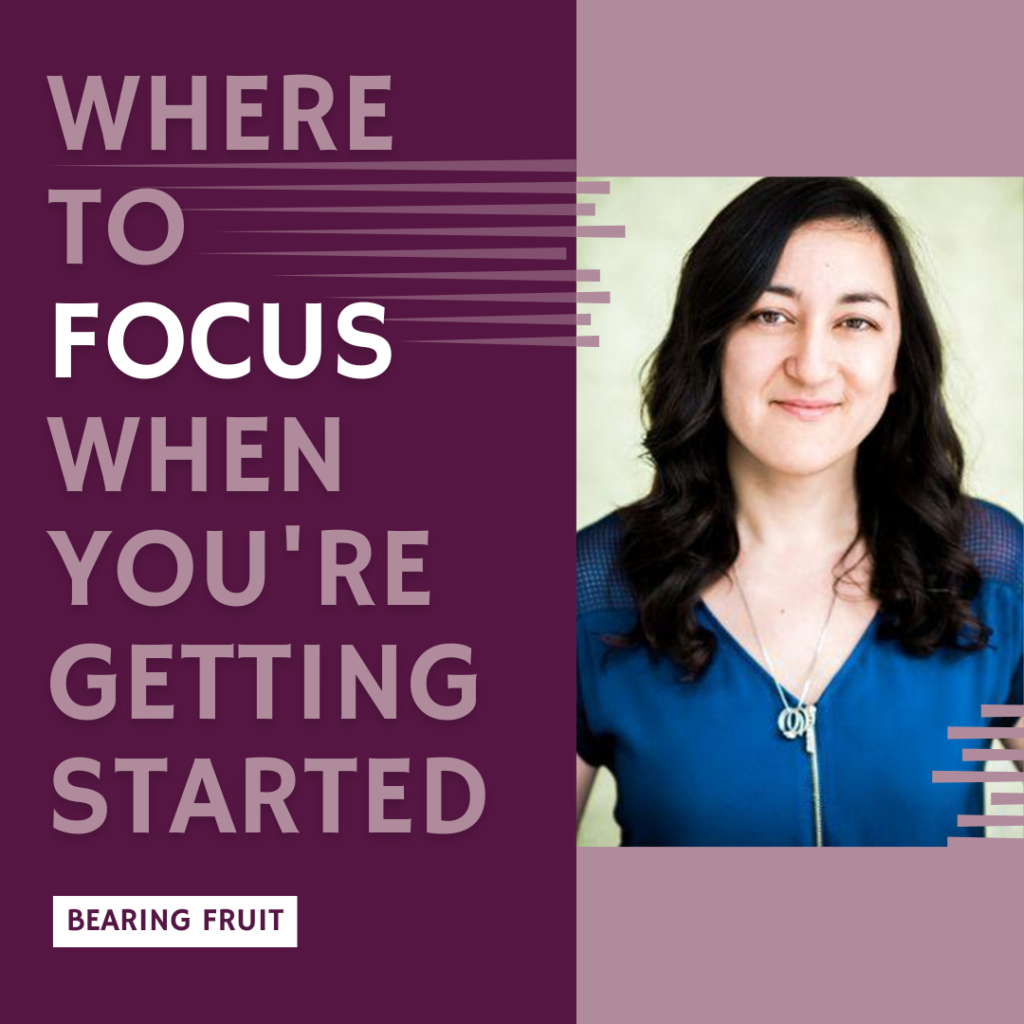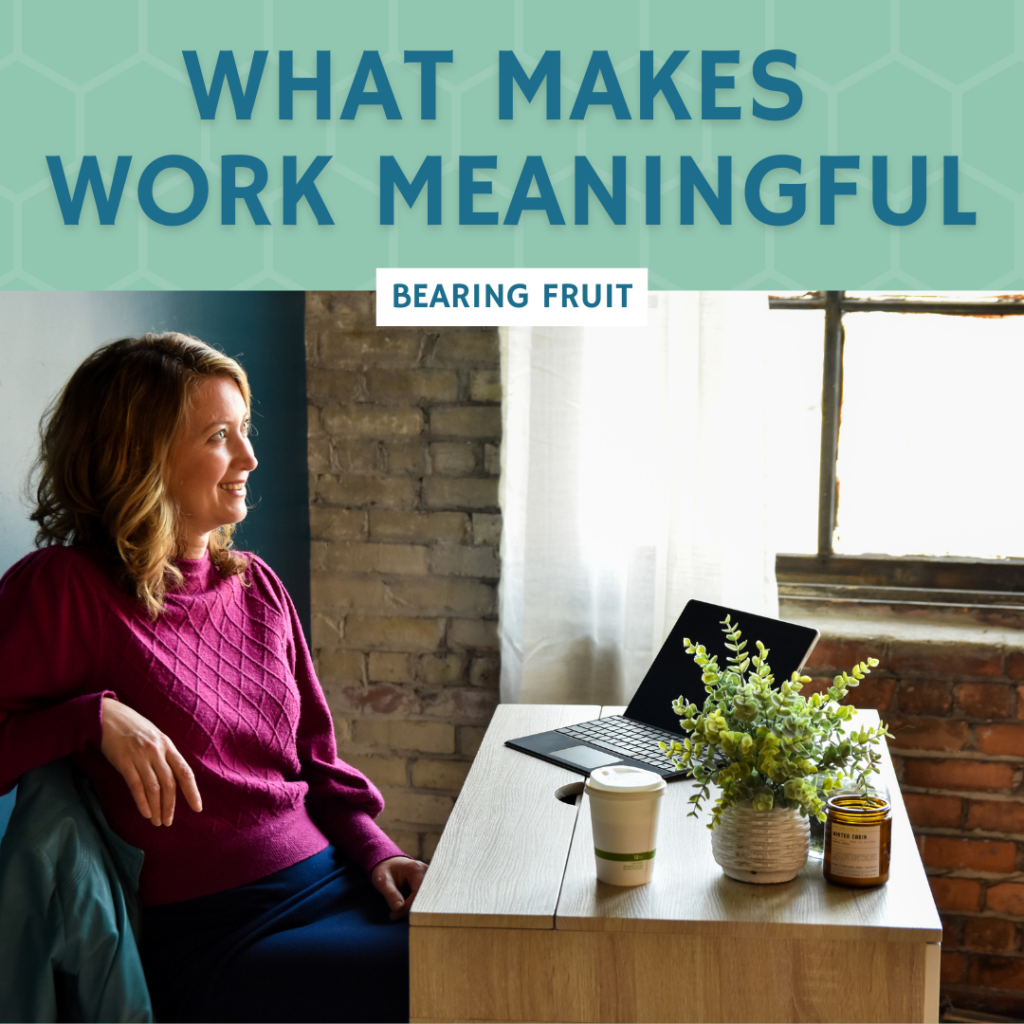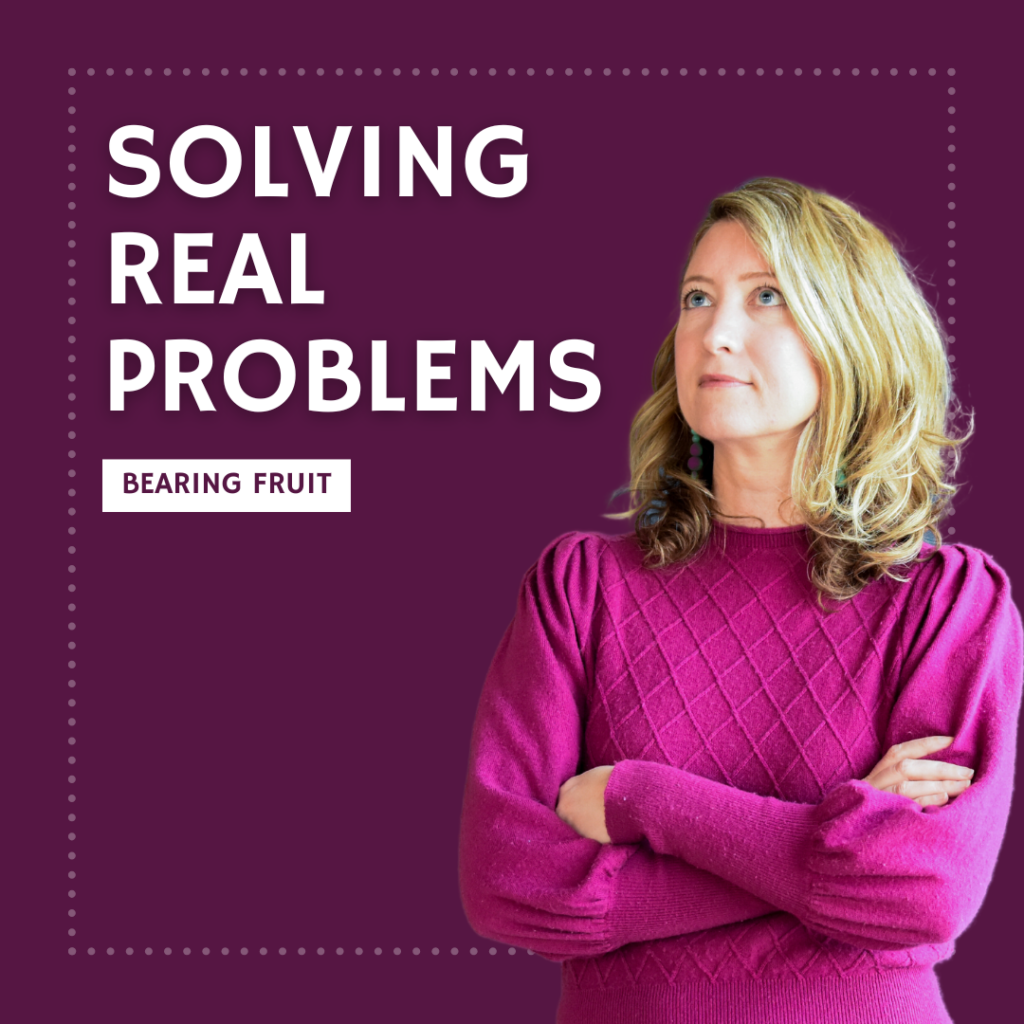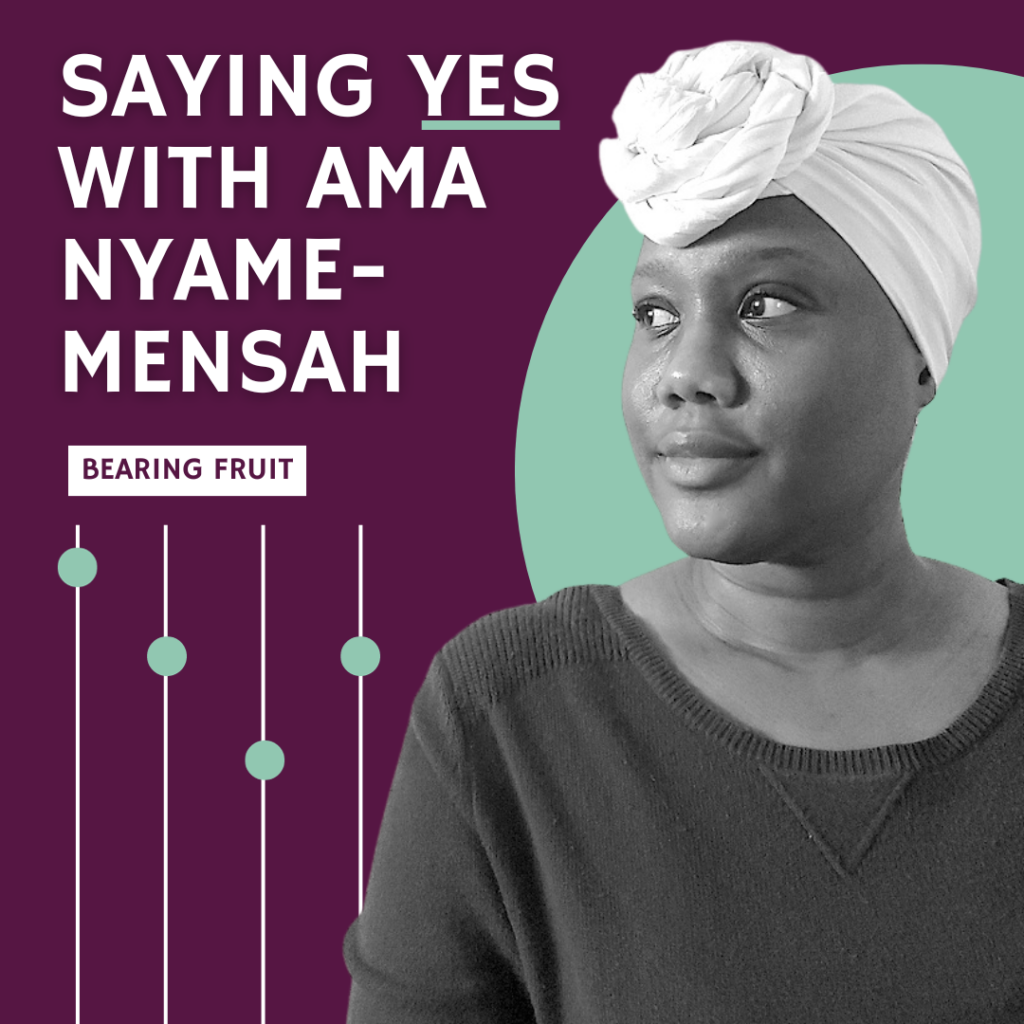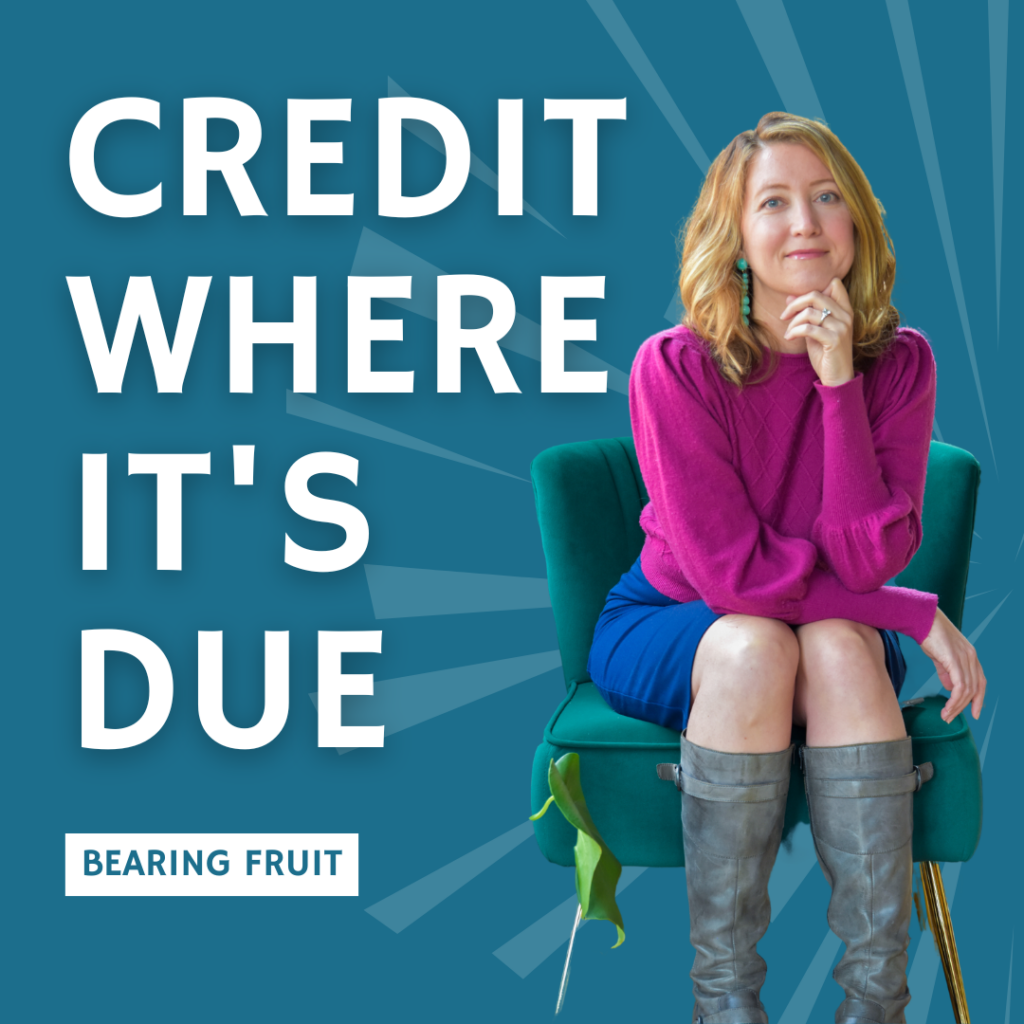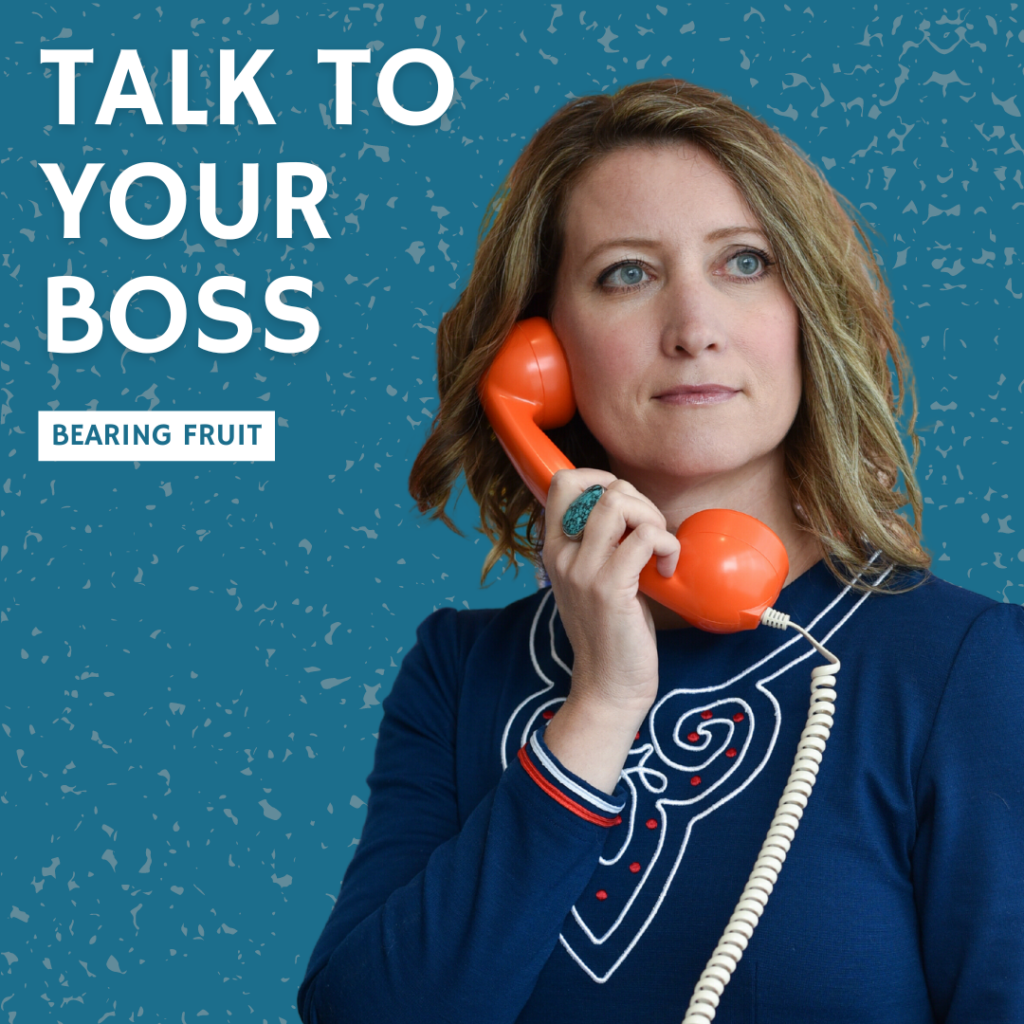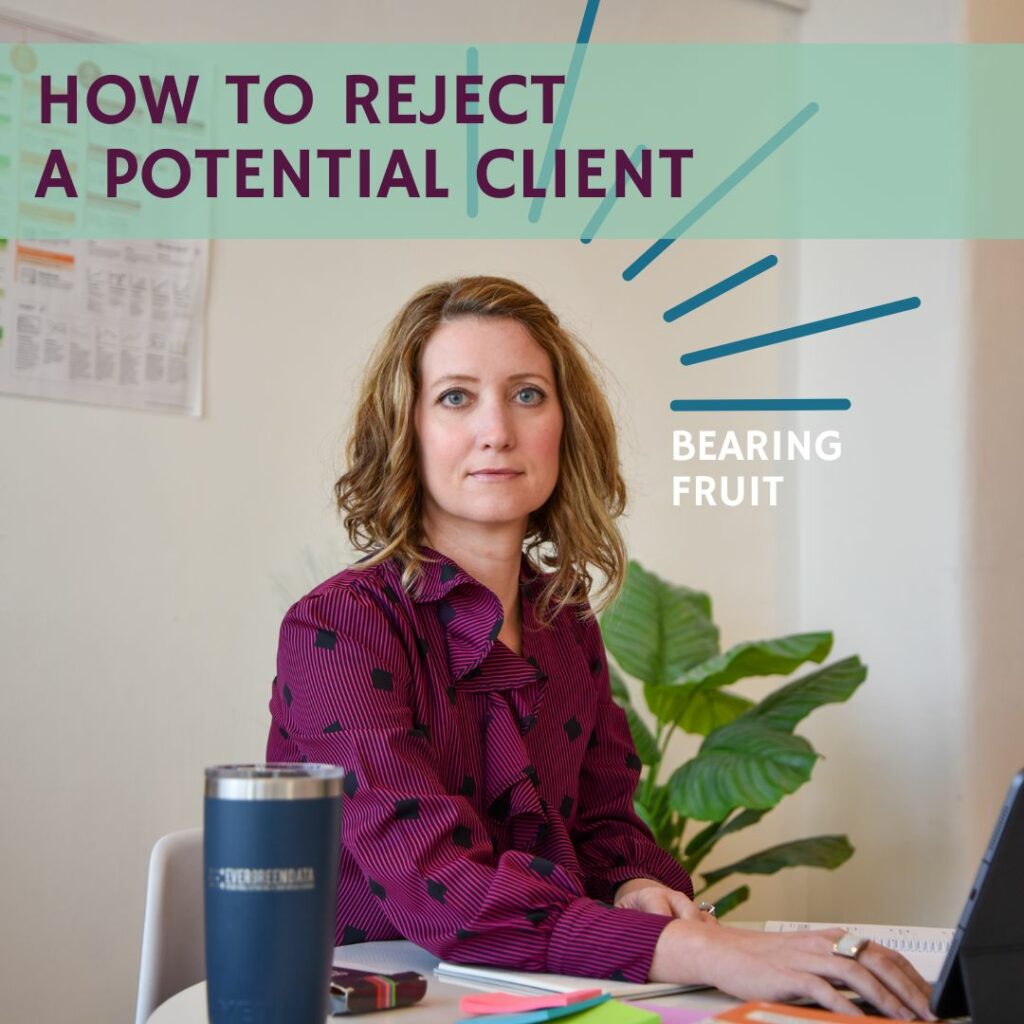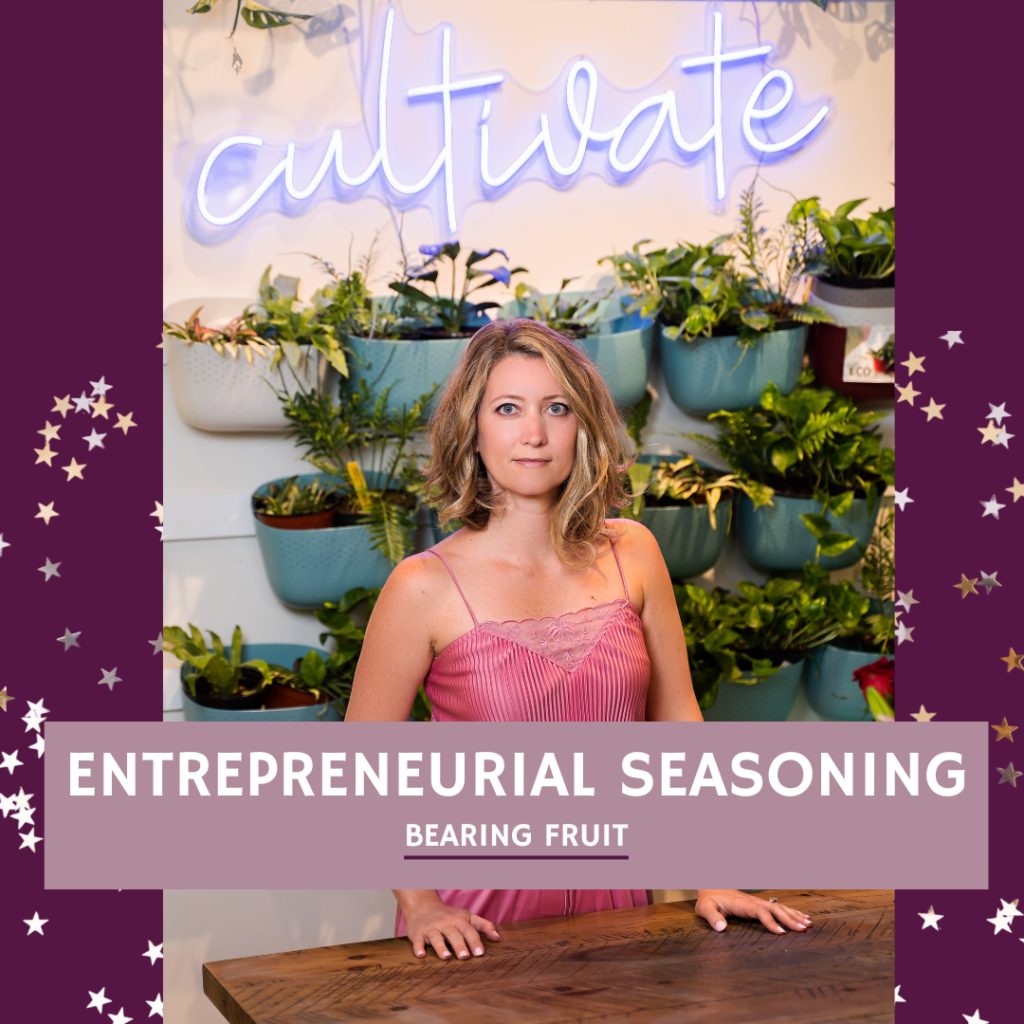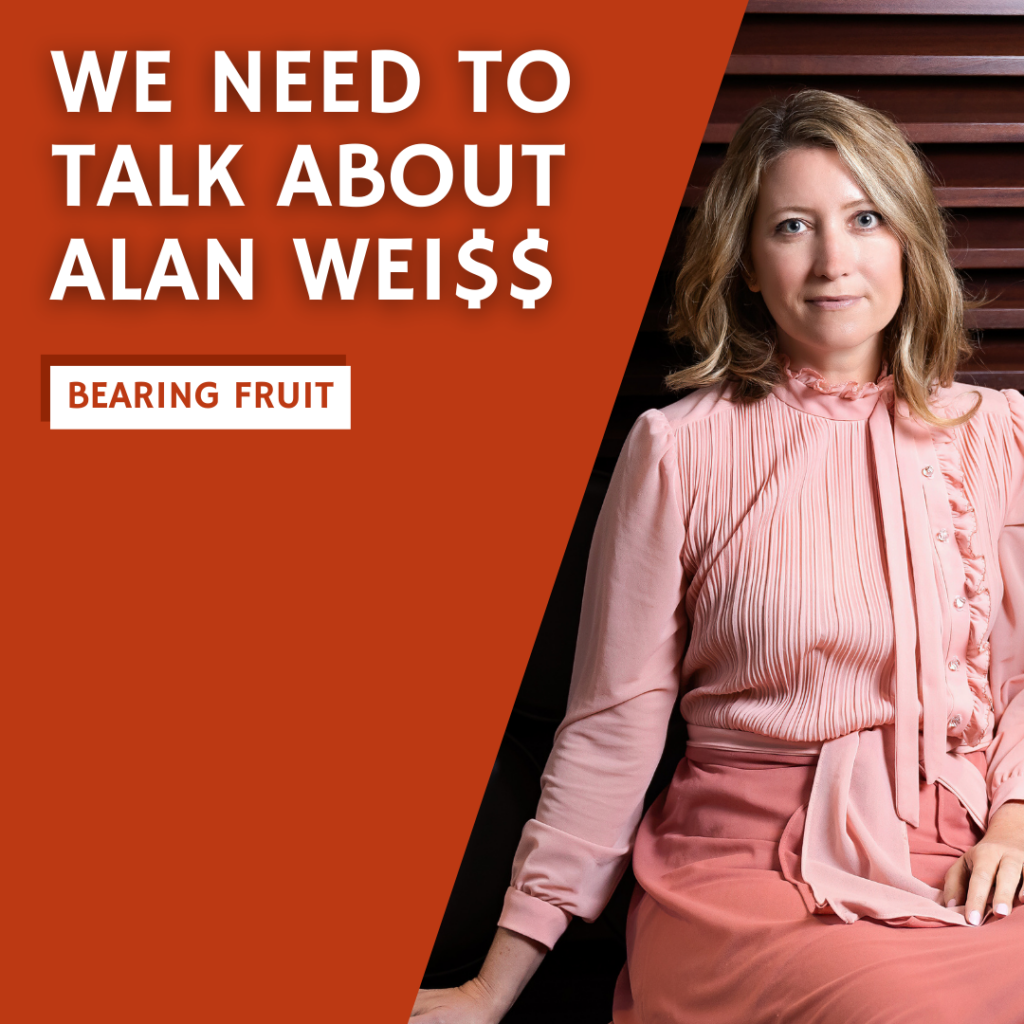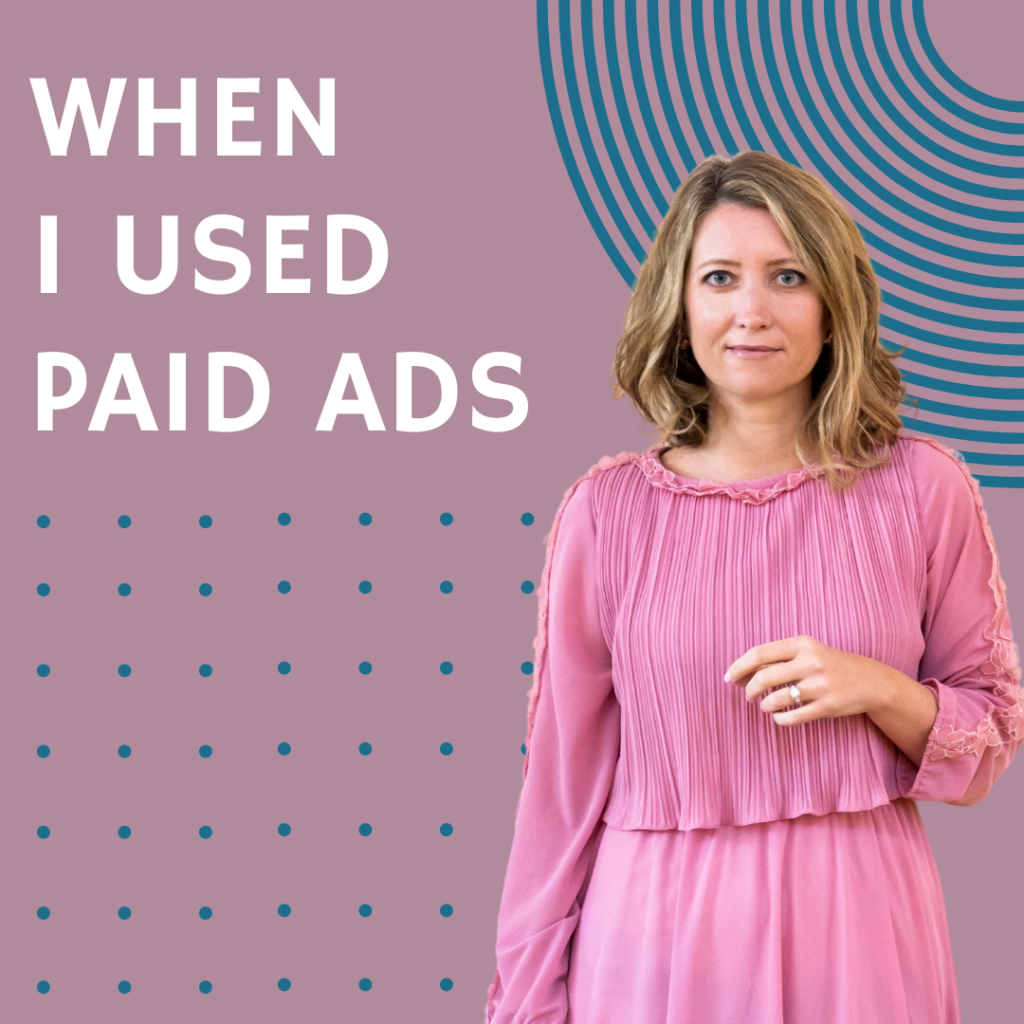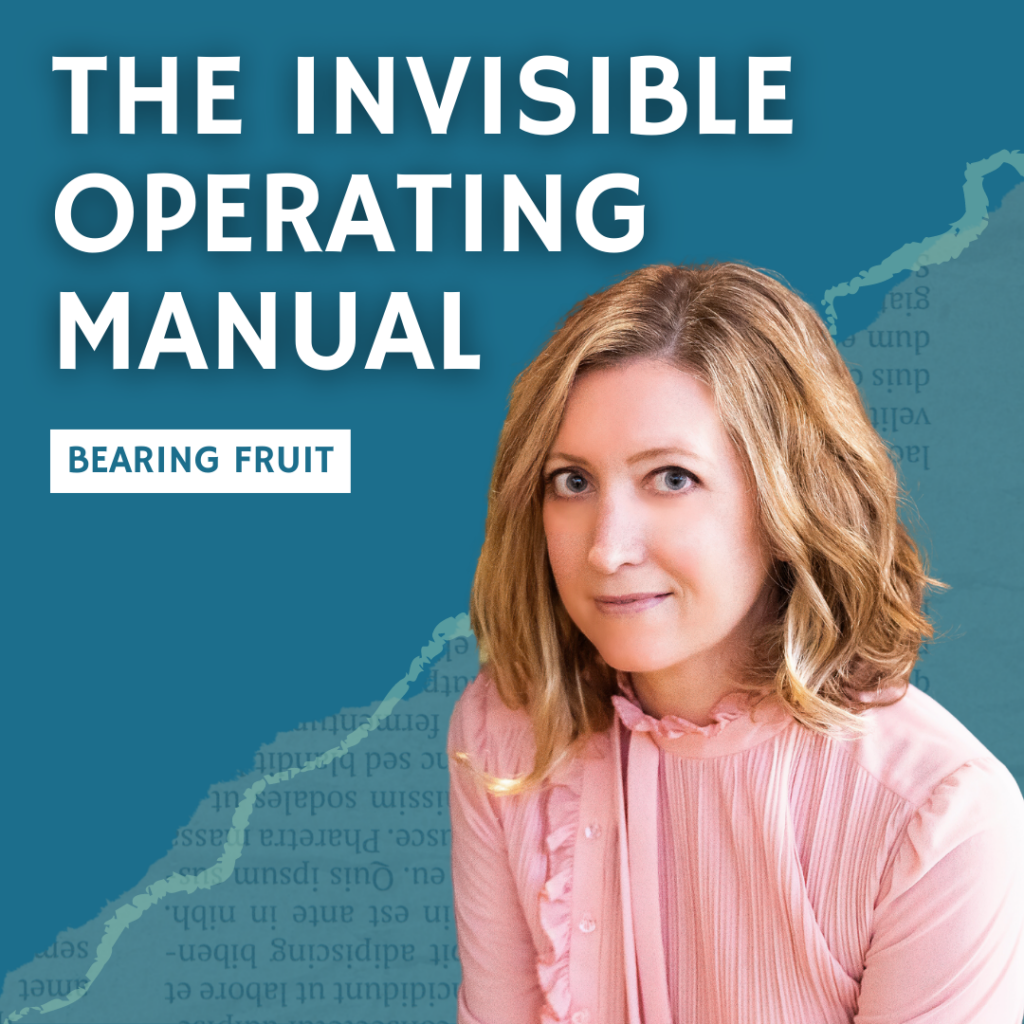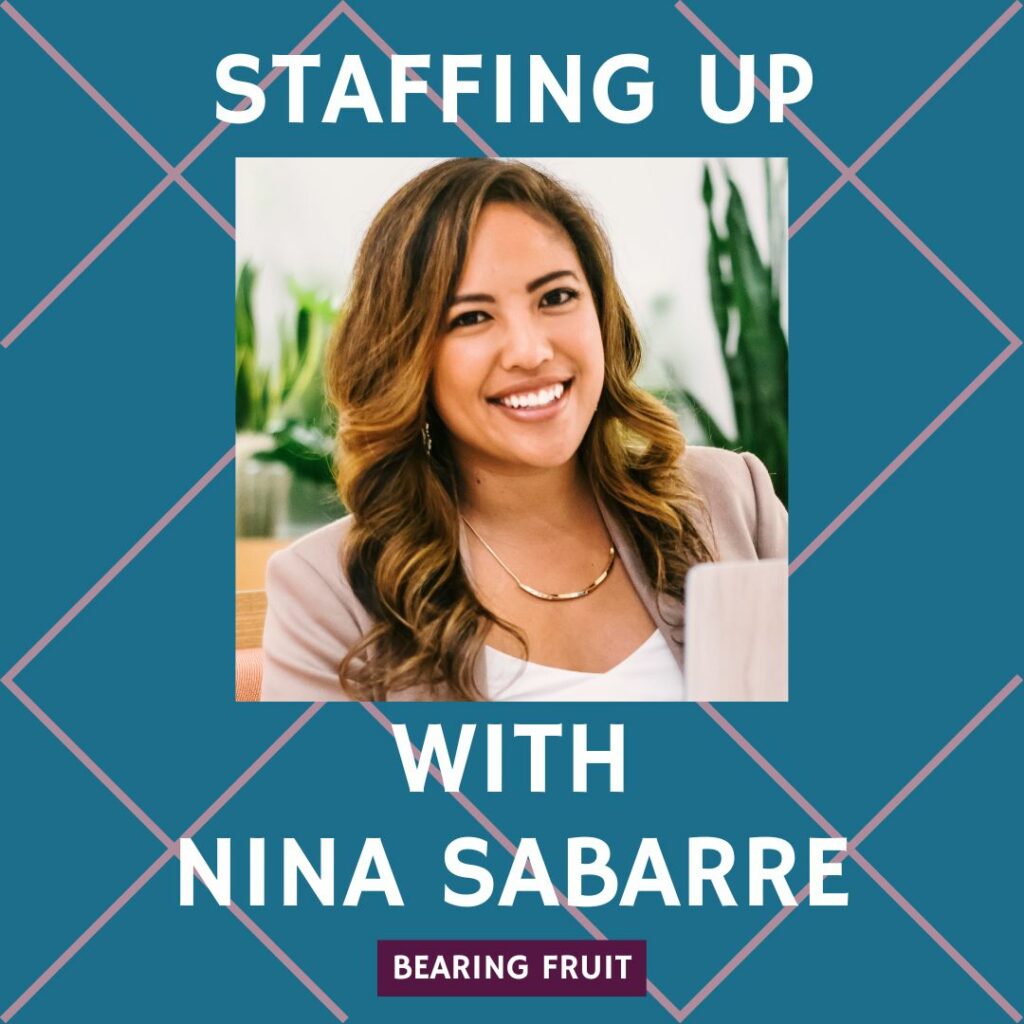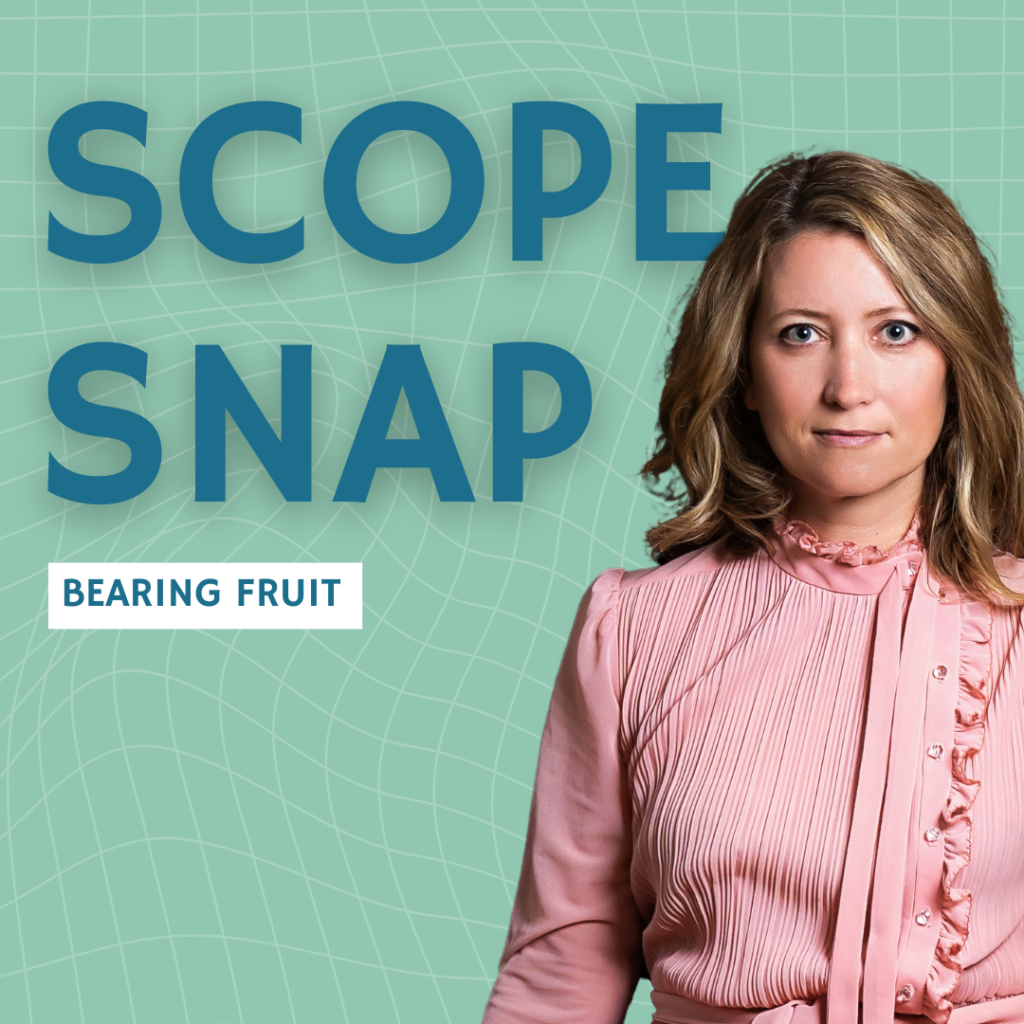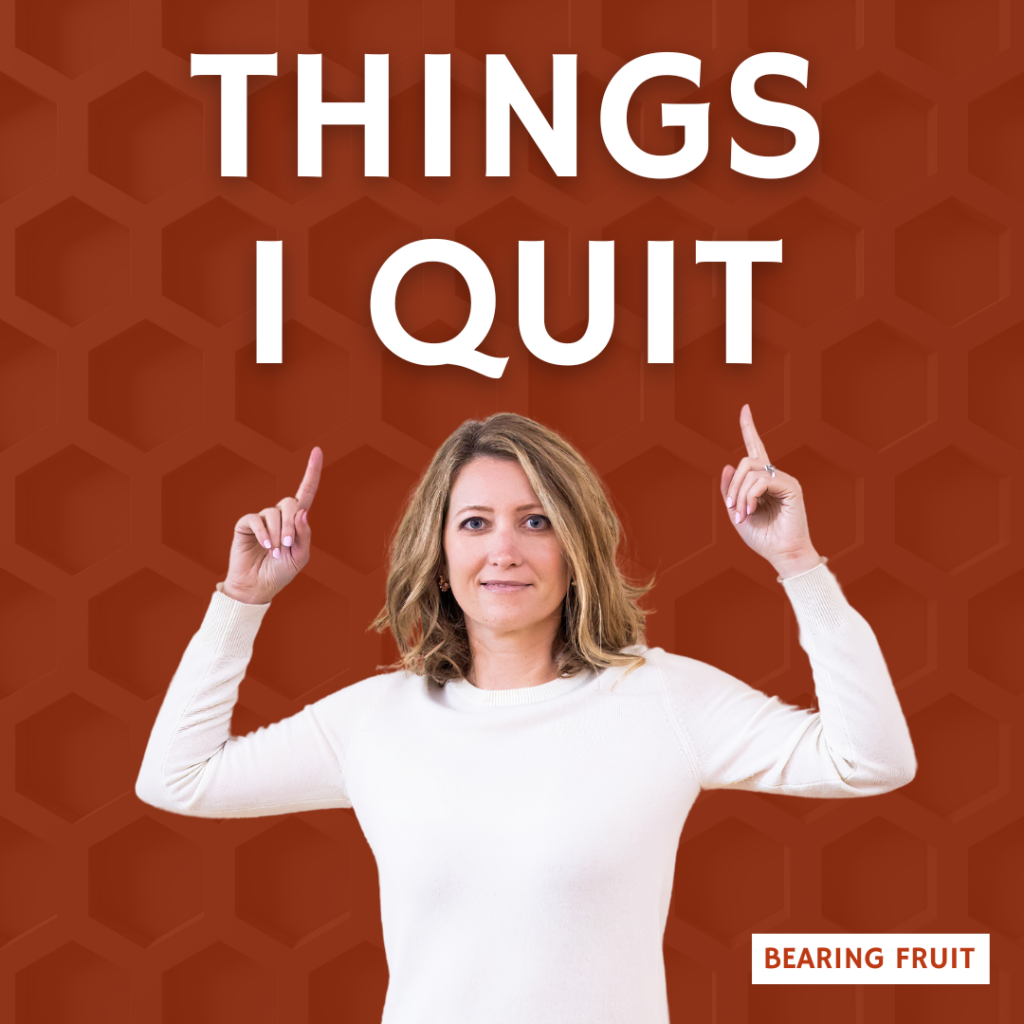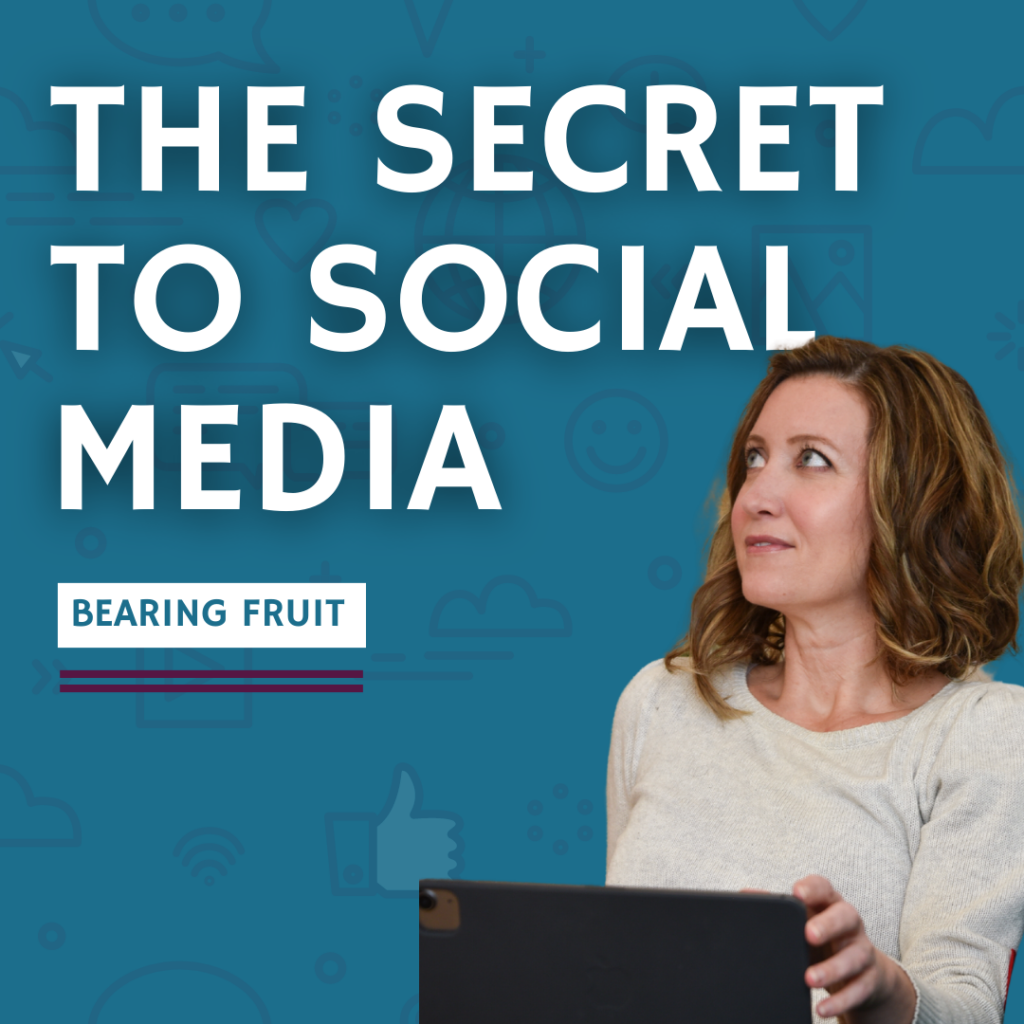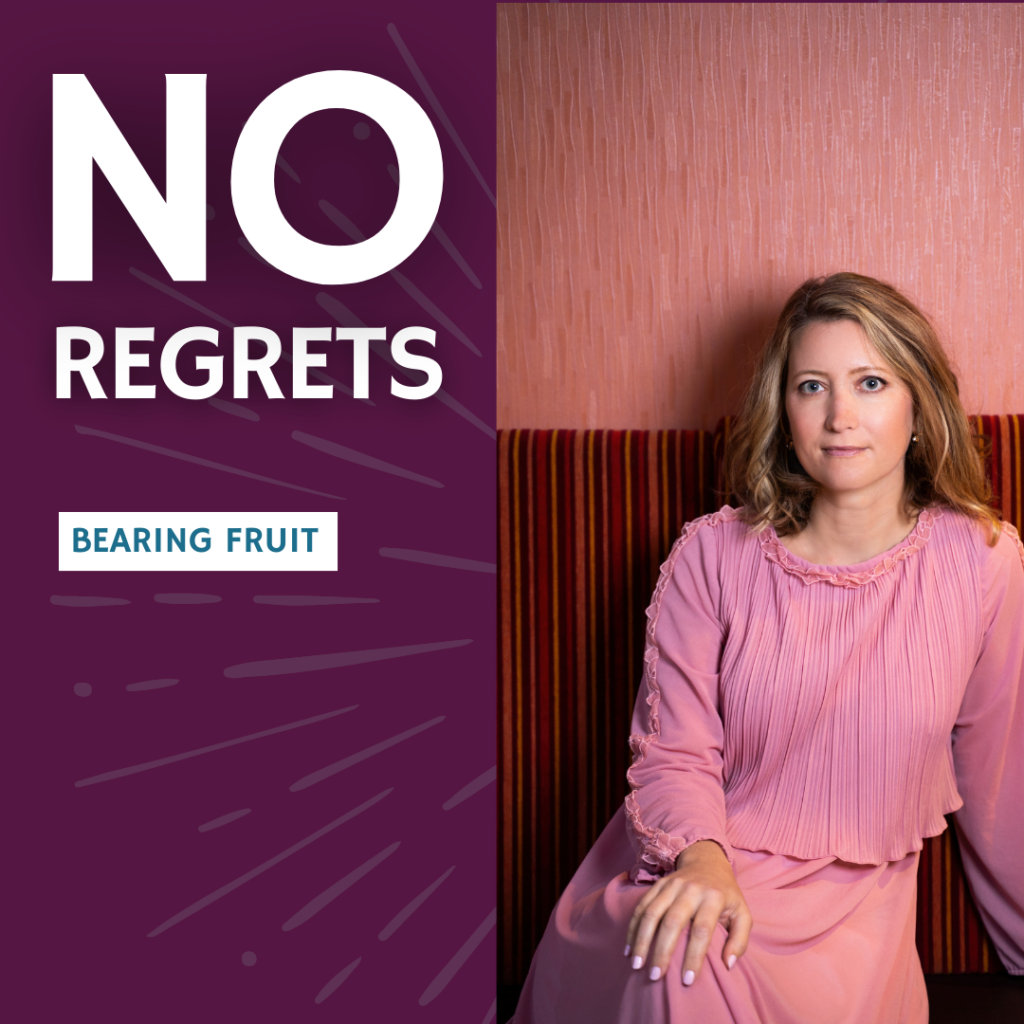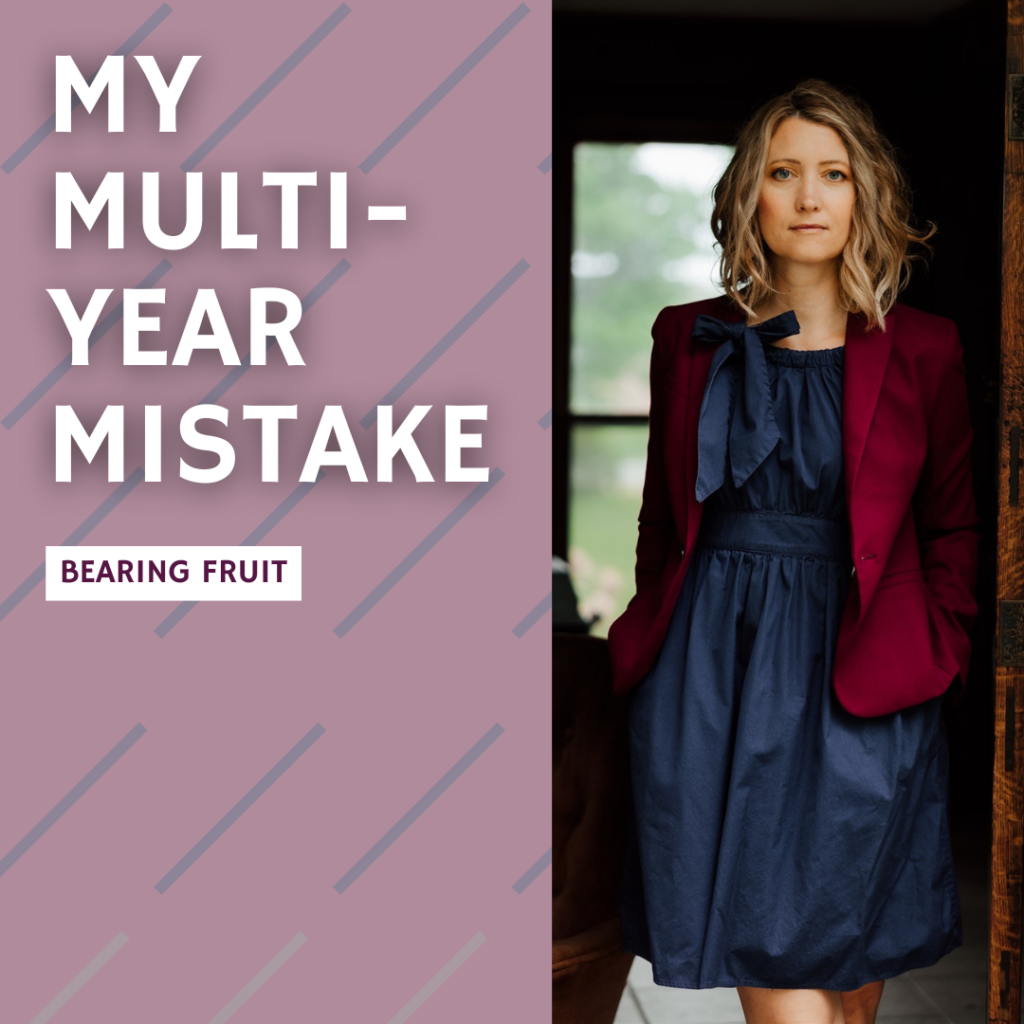Where to Focus When You’re Getting Started
Kevin O’Leary (of Shark Tank fame) was on Erika Kullberg’s (of Erika Taught Me fame) podcast and said mentors are people who give you early lessons learned. Given how true that is, take a seat with me and let Tamara Hamai mentor you for a sec.
Tamara runs Hamai Consulting. It’s an evaluation firm that works primarily with non-profits that focus on family and child well-being. Her website is super cute, take a look. Pitch perfect branding.
Tamara’s been in the business for so long, she’s what we would call “seasoned” and she’s now a mentor.
What I admire about her is how she’s embraced formal organizational roles and shifted herself out of the day-to-day, hands-on work so she can stay focused on company growth and leadership. That’s such a difficult transition for entrepreneurs to make.
But Tamara’s so good at it, she’s even created the space to test a dozen different marketing strategies, one of which resulted in a local news crew in her living room with a microphone and a camera in her face on a hour’s notice to interview her as a subject matter expert for that evening’s newscast.
(Tamara also recorded a guest lesson in Boost & Bloom on understanding your marketing funnel.)
Are some people just born to be great marketers?
Stephanie: Tamara, did you start your business already knowing a lot about marketing?
Tamara: I started the company because my employer at the time showed me that their values were in direct opposition to my values. I started my business so that I could do the work I wanted to do, the way that I felt it should be done. I had no background in business.
Stephanie: This sounds familiar.
Tamara: I put a lot of energy and time into learning how to run a business and how to do really good work with organizations and communities.
I learned about how to do my own bookkeeping and taxes.
How to write a proposal.
What insurance I needed.
Branding and creating business cards and a website.
I read tons of books, went to lots of workshops and classes, and dove deep into how to be a consultant.
When I wasn’t learning, I was serving my clients.
If I could have done anything differently, I would entirely change my focus from learning and client work to these two things: Being visible and building an alliance.
Stephanie: Oh this is some juicy hindsight right here. Say more about being visible.
Tamara: Marketing and selling are your most important activities every day as a start-up.
Start being visible from day 1. I spent years working on things inside my business, but hardly anybody (including potential clients) knew that I existed.
You need to be marketing and getting out in front of people. Start building relationships even when you don’t know who you’re serving or what you’re selling. As soon as you think you have something to sell, see if anybody will buy it.
Don’t worry about anything else until you have a minimum viable business model and you have validated it through sales.
Stephanie: Sometimes it can feel like visibility means … doing everything. So what would you not waste a minute on while you focus on visibility?
Tamara: When it comes to visibility, I worked so much harder than I needed to for a lot of years. I’m still not as visible as I should be. I wouldn’t waste any time creating visibility that requires learning lots of new things or going far out of what I already know and enjoy.
I hate social media (I have ethical issues with the data-as-an-asset business model) and a lot of other marketing activities require a lot of learning time for me.
I’d focus on being visible in ways that are easy and enjoyable. For me, that would be attending events, gathering people, and talking to people one-on-one. I also love teaching, so doing workshops at conferences would be on this list for me, too.
Networking, attending events, reaching out to talk to people over coffee/wine/whiskey, and doing workshops at conferences would have been the best way for me to spend 80% of my time in my start-up years. Thus, creating a strong, positive contact list and keeping in touch with them regularly.
Hi Reader.
Stephanie-as-the-writer popping in here to ask you to reflect on what Tamara just said in this part of the interview. 1. Figure out what marketing strategies feel natural to you. (They don’t have to be the same ones as Tamara.) And write to me to tell me what those are.
And 2. Get a contact list going and stay in touch with these people. I do that through newsletters (HI!) but you have options. The point is to set up a mechanism to keep in touch before you get out there wine-ing it up with folks so that you have an immediate way to stay connected.
Back to the interview.
Stephanie: So what about building an alliance? I see some new entrepreneurs who seem to have networking baked into their DNA and others who struggle with it more, like I do. How did that come about for you?
Tamara: Growing up, I had learned that success came from independent hard work and bootstrapping. But the truth is that no success that I’ve had in life was actually earned on my own, even though I worked hard for everything. None of us can do it alone. That’s where the alliance comes in.
The biggest decision you make is what you will and will not do with your time, energy, and resources. You’ll have better ideas and make better decisions when you’re working with other people.
The alliance that I have now that I wish that I had then: People who are my biggest supporters, who are invested in my and each other’s success, and are also unafraid of challenging me or showing me what I’m missing. A group where everyone can be honest, have their voice heard and valued, and have generative friction. We co-create ideas, solutions, and decisions in a safe space. They inspire me to be bold with my vision and hold me accountable to what I say I will do.
Stephanie: Now that you have the experience to speak from, what do you look for in an alliance?
Tamara: Who is in your alliance matters. The best members to have in your alliance include:
- People who have a diverse set of roles, perspectives, lived experience, and expertise.
- Mentors who have already achieved the kinds of big things you want to achieve, in ways that you admire.
- Peers one step behind, at the same level, and one step ahead of you.
- Someone who you know deeply understands you and your values (like someone who has known you a really long time).
- People with expertise/professional knowledge in critical areas (a lawyer, for example)
Once you have the people, you need to establish a safe and meaningful process for discussing issues and making decisions together.
Stephanie: And who would you avoid putting in your alliance? What mistakes do rookie alliance-builders make?
Tamara: Don’t just ask your friends or the people you already know for advice. You need people who will challenge you, but from a place of compassion. So, don’t waste time talking to people who are your friends who will support anything you do or anyone who thinks it’s ever helpful to “play devil’s advocate.”
Steer clear of people who tell you to do it their way, or that there is only one way to do things.
Don’t try to build your business alone while you sit in your makeshift office-dining room.
Don’t hire the first marketing consultant you find (I’m still getting over this one…)
Stephanie: I need to hear this story over wine.
Tamara: …or the first coach who says they can help you.
Most people know, are friends with, or are connected to people who are similar to them in terms of perspective, attitudes, and life experiences.
I’ve learned more by having mentors, coaches, advisors, friends, and colleagues in my alliance that are different from me and different from each other.
The people who are going to be your strongest supports are willing to challenge you to think differently while embracing the need to test and adapt ideas through your values for the business that you want to build.
Hi Reader.
Stephanie-as-the-writer back again to ask you to think through who is in your alliance. If it’s just your closest besties, Tamara’s telling you that won’t be the best way to grow.
Your alliance should make you feel challenged a bit. Slightly uncomfortable because your ideas are being pushed. Perhaps even pissed off from time to time.
Your alliance should also make you feel fully supported. Inspired. Buoyed through the different phases of your business, even when you become as seasoned as Tamara.
So, who is in your alliance right now? Count me in. And who do you need to add? Send me your list.
40 Hours. Every Week?
Hey, quick question:
How the hell do people work 40 hours in a week?
Every week?
As I write this, I’ve just come from two entire weeks in Columbus Ohio, where I led a data viz workshop every single day.
I left my rental apartment at 8am and got back at 4:30pm. This is an 8.5 hour day, with a whole one-hour lunch in the middle.
So that’s 42.5 hours per week at their office. (You know I was bringing multiberry muffins to the security guard by the end of my second week.)
About 10 days into this experience, I was texting friends with the same question I’m asking you:
How the hell do people do this?
In order to be out the door by 8am, I was getting up at 6.
Taking 20 minutes to stretch, foregoing my usual yoga routine and meditation time, but just doing the basic maintenance all my freakin physical therapists tell me I have to do before my body parts fall off.
Making coffee and brekkie and packing lunch. Taking the supplements and drinking the green powder. Cleaning up the kitchen.
Putting on all the makeup and doing all the hair (aka getting on the Hot Girl Hamster Wheel, as it’s called on The Money with Katie Show).
And hustling down High St.
By the time I got back to the apartment at 4:30pm, I was famished, so I dove into dinner prep.
Running to the grocery store.
Spending perhaps an hour over the whole day connecting with friends and family.
Hitting up taekwondo twice a week.
Laundering and vacuuming.
Showering and grooming.
Sleeping 8 hours.
Totally unable to keep up with all the other emails in my inbox.
Entirely forgetting that I’m supposed to be researching a new car because the mechanic said mine could catch on fire.
Definitely not following up with the contractor on the bathroom repairs.
Barely noticing all these other Life Things that are just on hold for two weeks while I tread water, until I get back home to my way-less-than-40-hour schedule.
And that’s without having to raise small children or care for elders or even take a dog for a walk.
Come to think of it, the only time of my life when I was able to put in 40 hour weeks was when I was a young adult with no family or responsibilities.
Beyond that time, I think we all have to sacrifice something to keep afloat in a 40-hour work week world. We skimp on sleep.
We grab convenience foods and jeopardize our health because there’s literally no time to eat fresh.
We don’t have hobbies.
We skip exercise.
We don’t nurture our friendships.
We get sick a lot.
Something gives, because something’s gotta give.
I don’t see a way to live a healthy life and also work 40 hours a week. The math aint mathin.
Unless, of course, you have a partner who can manage your household and get your groceries and cook your meals and nurture your social relations. Unless, that is, you have a traditional wife.
Which were exactly the circumstances under which we got to a 40-hour work week. Our elders unionized to get working conditions DOWN to 40 hours. And that was a plausible scenario when people primarily lived in hetero households (even as they did whatever they wanted elsewhere) in which the husband worked and the wife did every fucking other thing under the sun.
In these modern times, a 40-hour work week simply isn’t sustainable.
We don’t need more articles teaching us about batch cooking.
We don’t need another podcast extoling the virtues of a treadmill desk.
Enough with the efficiency hacks showing us how to shoehorn even more around and within and in addition to the 40-hour work week.
We actually need some of that time back.
At Evergreen Data, a typical work week is 26-30 hours and that’s plenty.
40 hours is an outdated construct meant for a different society than the one we live in today.
Reason #4,325 why you need to start your own business. You set your schedule.
Then you go live your life.
A Halloween Horror Story
On the occasion of Halloween week, let me impart a bit of horror with a story about a mistake I made on my very first venture working for myself.
My maiden voyage was a client who I had also worked with at my full time employer. She was interested in some (cheap) design work that was outside of the scope of services my now previous employer offered.
I was going to design the pages of a textbook.
Why?
This was miles away from the work I knew how to do. On another planet. Not my circus.
But I said yes anyway because, as all new entrepreneurs do, I was desperate to make sure I could pay the bills.
The Terms of the Contract
I wrote up a contract that said I’d get:
20% of the total cost upon delivery of the mockup of a dozen key pages.
50% at the delivery of the full first draft.
30% at the conclusion of the work.
We sign, I break open the champagne.
The Reality of the Contract
The next morning I crack open my laptop and get to work.
Within two weeks I had a dozen pages I was happy with and shipped those over to the client.
She took about a week and then got back to me with:
“Thanks – these look good. We’ve got it from here.”
Me: “I’m so glad you love the layout. I’ll get started on the full draft.”
Her: “Sorry that wasn’t clear. We don’t need you to make the full draft. We’ve found a grad student who will work from the models you set up and create the rest of the book.”
What would you do here?
The Terms of the Contract, Revisited
I scrambled to the contract. Yep, there WAS a cancellation clause! Got you!
Oh wait.
The cancellation clause said that either party could cancel with a 10-day notice and that the contractor (me) would be compensated for the work completed to date. (This is actually very boilerplate – contracts are not designed to protect the contractor.)
Which means, yep, I was stuck with 20% of the compensation I was counting on (all those bills to pay) even though developing that 20% took the vast majority of the intellectual work.
The client was completely within the bounds of the contract, though both the contract and the client’s use of it (I can now see) were ethically questionable.
What would you do here?
I cried. I got mad. I wallowed in the injustice for a day and then I set about finding more work.
And I embroidered this experience into my mentality. Lesson fucking learned.
Ok, friend, here’s what you can do to keep yourself out of this mess in the future.
- Negotiate better cancellation terms. What could it say? I don’t even know. Because you don’t want to get in a rare situation where YOU need to cancel but can’t because you wrote out a clause that’s too restrictive. I’m actually not sure there’s much you can do here, but maybe you’ll think of something creative and contract lawyers can help.
- Reallocate the percentages and due dates. I’d ask for a percent of the contract at signing (pay bills). I’d ask for a much higher percentage due at the mockups. My allocations would look something like this:
- 15% due at signing
- 60% due at mockups
- 15% due at first full draft
- 10% due at final full draft
This way, you get the bulk of the payment when you deliver the bulk of the intellectual property. If your client ever pulls what happened to me and ditches you upon receipt of the mockups, you’re only out 25% (which would still suck, but not as much).
Your pay isn’t connected to your time. It’s connected to your intellectual property.
Want a postlude? It became clear to me that this client honestly hadn’t thought she’d done anything wrong or morally questionable. Because a year later she reached out and asked me to work on another project.
What Makes Work Meaningful
I learned a new word: Eudiamonia. It means “flourishing and living a life that realises one’s potential.”
I can’t pronounce it, but eudiamonia is all I want.
Work is surely only one component of a flourishing life, but it’s a big one.
Nikolova and Cnossen just published a study that identifies the three big factors that contribute to whether you feel your work is meaningful and satisfactory. The three big factors are:
Autonomy
Which means that you believe you have control over what you do with your time.
Competence
Which means you believe you can figure it out, even if it’s challenging, and that your effort contributes to a greater good.
Relatedness
Which means you believe you’re well-connected to your colleagues and bosses.
If you’re high on these three areas, the researchers say, you’ll be willing to withstand some underperformance in other aspects of job satisfaction. For example, the authors report that nurses usually have a high job satisfaction, even if there are parts of the job that totally suck.
I can hardly understand this, but those three factors were “4.6 times more important” than working hours, pay, benefits, and career advancement.
Pay and benefits were not as important.
Record scratch.
Perhaps if you are forced to choose between purpose and pay, you’d choose purpose. But it’s a false dichotomy.
When you work for yourself, you get to set your own pay and choose your own projects. You get pay AND purpose.
And that’s why these particular results excluded people who were self-employed. The researchers said this was because self-employed people can’t score on relatedness, since they have no peers or bosses. Huh? I have a wonderful group of colleagues. (And the best boss, just sayin.)
If they included the self-employed, it would certainly skew the results, but not because of relatedness. Because we’d be the examples of eudiamonia – where you can do incredibly meaningful work AND have flexible hours and a strong income.
It seems to me that the only way to really achieve eudiamonia is to work for yourself.
When the researchers pulled a subset of the data, where they could include the self-employed, they found “the self-employed enjoy greater mental health and subjective well-being compared to similar regular employees… This well-being premium is often attributed to the utility of being your own boss and having autonomy and flexibility.”
And, I’ll add, BEING PAID WELL.
Did your mental health change when you started working for yourself?
Mine sure did.
And, to note, the researchers pulled this data from the European Working Conditions Survey – so this sample is a particular cut of society. One where it’s common to go on holiday for the entire month of August and take 2 hour lunches with friends.
How do you think these results would differ for people in the American work culture? Or the Indian work culture? Probably a lot, though I don’t know how. So take this with that particular grain of salt.
The researchers added that “career advancement possibilities and working hours are more strongly associated with meaningfulness for the non-self-employed group.”
Which, I’m speculating, is because we the self-employed advance our own careers and set our own working hours. We don’t rely on the benevolent boss to deem us worthy. We are worthy. All of us.
If you haven’t yet taken that spring off the cliff to work for yourself, let this study be one more reason – it’s the best way to achieve eudiamonia.
If you already work for yourself, let this study light you up on the darkest days of entrepreneurism, when you’re dealing with the parts that totally suck. Your chosen path is the best set up to flourish and make the most of this one wild and precious life.
Ok, I can’t end on such a tender note. I’m going to leave you with the one quote from the article that made me LOL:
“Dur and van Lent (2019) document that about one in ten employees finds their job useless, with the share being the highest among those engaging in routine tasks as well as those in sales, finance, public relations, and marketing.” (Emphasis added is mine, I love you people and wish you a flourishing life.)
Solving Real Problems
Laptops were supposed to be a symbol of freedom from the chains of the desktop computer. It was sold like You can work anywhere!
But it ended up being more like: You can work. Anywhere.
Ash Ambridge has been talking about how tech was supposed to save us but it actually only made it possible for us to work even more. Crap.
That pace increased even more when we all went work-from-home. In that time, according to one source, the work day increased 2.5 hours.
NO THANKS!
Enter Heineken.
Yes, Heineken.
The beer company that was a central feature of your undergrad days.

Friends.
I haven’t had a Heineken since 2004 but I kinda want one now.
Because this is genius.
This marketing campaign hits the Surprise and Delight buttons for consumers.
And it solves a real world problem.
The bottle opener isn’t even their main product. Nor will it ever be. They only produced a limited number and, sorry, your window of opportunity is over for now.
But it was an ancillary product that led people to their main seller.
The bottle opener is a tool that lets the beer drinker become the marketer. You know someone is taking that to the next party, with a case of Heines, and showing everyone how it works.
Think about this the next time you’re looking for a thank you gift for clients, some conference swag, or a small product to add to your ladder. No one needs another totebag.
What could you do instead that aligns with your brand, solves a real problem, and makes people smile?
We usually think of marketing as paid ads or social media posts but – especially because everyone else is zigging digital – when you zag physical, you corner the attention.
Saying Yes with Ama Nyame-Mensah
Ama Nyame-Mensah DMd me with a super juicy comment: I think I have some prospective clients who are breaking the No Assholes rule.
Let me back up: Ama is a student in the first cohort of my Boost & Bloom course for entrepreneurs and she knew that my three rules (passed to me from my mentors, who had it passed to them) are: Fun, Lucrative, No Assholes.
Let me back up further: Ama runs a company named Analytics Made Accessible (handily acronymed AMA – get it?). It’s a few years old now. Ama and AMA help people explore, analyze, and communicate their data more effectively, primarily by teaching folks to create compelling charts and share data stories that matter.
A company after my own heart.
And most of the time, I see young entrepreneurs so stressed about paying the bills that they’re saying yes to everything that even remotely looks like it could contribute to cash flow, even if the prospective client is kind of a jerk.
But not Ama.
Stephanie: Ama, you’ve clearly done the internal work to know your boundaries and to be able to spot a jerk from a mile away. What exactly is on your red flag list?
Ama: I will never forget a piece of advice my sister Akua —an Executive and Leadership Coach—shared with me a couple years ago: “If you say yes to everyone, you’re always saying no to yourself.”
Stephanie: I’m reading that again.
Ama: And she’s right.
When I first launched my business, I said yes to everything and everyone. I didn’t care who I worked with as long as I got my name out there and made money—bad idea. I was saying yes to projects that weren’t a good fit and clients who didn’t respect me.
The result: I was miserable.
Hustle culture tells us that overworking and accepting mistreatment from demanding clients are necessary to achieve success. Working with difficult clients who disrespect you and your boundaries and undervalue your expertise will ruin your business and wreak havoc on your financial and mental health.
Stephanie: Give us an example of client disrespect. I’m hoping others will read this and start to recognize when it’s happening to them.
Ama: I’ll share two flavors of disrespect.
Flavor #1: Not valuing my time.
I once had a prospective client reach out to me, looking for an external evaluator for a project.
I will not lie; I initially disregarded the message and sent it to my junk mail because I thought it was spam. But curiosity got the best of me, and I responded to the email, thanking them for sharing the opportunity and setting up a time to chat about the project.
Readers, I kid you not; over two months, this individual rescheduled on me FOUR DIFFERENT TIMES (including once right as we were supposed to log into our scheduled Zoom meeting)!
And if you’re wondering, we never connected about the project.
Then, three months after not connecting with this person, I got an email “thanking” me for my interest in the consultant position (huh?) and completing and submitting documentation (I never submitted any paperwork) …BUT they had decided to proceed with another party. (I got a good laugh out of that one.)
Looking back, the biggest mistake I made was going back and forth, sending multiple Zoom links to a prospective client who was never interested in working with me.
Life happens, meetings get moved, deadlines get shifted, etc. And I cannot penalize someone simply because they’re late…once (maybe twice). But when someone repeatedly reschedules, postpones, or does not show up before becoming a client, you can guarantee they will do the same once you start working with them.
Bottom line: Don’t work with people who do not respect you or your time.
Flavor #2: Rude and unkind.
A couple of years ago, someone approached me to lead a potential project their team had been kicking around. They were attached to a cool group, so I was excited about collaborating with them. So much so that I let a lot of things slide that I shouldn’t have.
By the time I realized something was very off, I had already done several months of free work with no contract in place. But I thought: No worries; we had talked about them paying me for the work I had done to shape the project upfront after pushing the paperwork through.
Readers, that never happened.
When the paperwork was almost complete, everything fell apart. The organization spontaneously came up with a new deposit policy, which they promptly blamed on legal. And when I reached out to have a conversation with my point of contact, the conversation went horribly, horribly wrong.
What I hoped would be a moment for us to come to an understanding about my boundaries and a reiteration of what we had previously agreed to devolved into a weird conversation where they casually dropped that I should be grateful that they would even consider working with me on a project like this.
Rude much?
Remember, you are a business owner. You do a job, get paid, and the cycle continues. (That’s not to say you cannot forge long-lasting, mutually beneficial relationships with your clients.)
But some folks will make you think they are doing you a favor by working with you, even though it’s work they want (and usually need) done. Clients you partner/work with are not doing you a favor. There is no “favor” in business. People value what they pay for, and they pay for what they value.
Bottom line: Don’t work with unkind people.
And Stephanie’s bottom line: No spec work! No work before the contract!!
Now that I’ve been burned a few times, I know to look for these positive signs that someone (or an organization) will be a good partner:
- Collaborative: At the heart of any successful collaboration are communication and transparency. I am always excited by open-minded clients interested in working together to experiment and discover what works and what does not. Data + Design work is iterative, so partnering with folks open to hearing and giving feedback is key.
- Kindness: To some, respect can be bought. For example, if a client is purchasing your services, you (the consultant/entrepreneur) have to respect them while they can treat you (and their staff!) however they please. When I talk with prospective clients, I watch (and listen!) to how they interact with each other and me. People who treat others with respect and kindness are more likely to treat you with respect and kindness.
- Follow-through: Anyone can talk a good talk. But good prospective clients walk the walk. Verbal commitments are great, but they mean nothing without consistent action. This is where follow-through comes in. Follow-through is the key to creating trust in a new relationship. It lets people know you are serious and that you value their time. Follow-through at the beginning of a client relationship can be as simple as honoring meeting end times or demonstrating a commitment to a project by sharing a project description or proposed budget.
Knowing how you want to run your business, the types of clients you want to partner with, your values, and being comfortable communicating your expectations and boundaries will make you a happier entrepreneur.
What would you add to your Yes List? Tell Ama!
Credit Where It’s Due
Have you seen Native deodorant? It doesn’t have aluminum and the unisex-intended scents are pretty decent.
It became so freakin popular, within two years CEO Moiz Ali scaled Native to $100M, sold to Proctor and Gamble, and got that golden exit that so many startups dream of.
A dramatic two year ascent, between 2018 and 2020. All because Ali got curious about the label on his deodorant one day, as the legend is told on Native’s About Us page:
Only, this is mostly bullshit.
Two years after his golden exit from Proctor and Gamble, Ali finally told us his version of the origin story, over on Twitter (or X).
I’ll link and screenshot here because I can’t believe this link still works – he kept this thread in existence.

Are you seeing this? Dude didn’t invent anything. He repackaged a woman’s product and resold it under a different name and catapulted to billionaire status.
He goes on to detail the benefits of this resell-Etsy strategy.
After a bunch of WTF in the comments, he further insists that she wanted it this way. We never learn her name, she just remains an anonymous woman. We don’t even get a link to her business so we could support her in some way.
She gets no credit on the website.
No golden parachute out of P & G.
This story isn’t new, of course. We have countless stories about scientific breakthroughs that result in a Nobel awarded to the man while the women in the lab get zero recognition.
Though this happens everywhere, it’s a particularly American story to be self-sufficient, self-made, reliant on no one. It’s just also bullshit.
(And how, in a particularly litigious America, do we not at the very least have lawyers questioning whether credit should be shared as a part of their due diligence???)
(Sorry, that question actually has an obvious answer that’s connected to the overall issue here: Patriarchy.)
Ok, this makes my blood boil to the point where I have to intentionally cut off my elaboration of the problem to turn toward solutions or this will become the longest post you’ve ever scrolled.
If you’re the creator
Protect your IP. Soooo many contracts have, as boilerplate, that you as the consultant must assign your intellectual property to your client to use, change, and distribute as they wish with zero credit or compensation to you forever and into infinity. Do not sign. Ask for this clause to be struck or modified.
License your IP. Rather than give up her deodorant recipe (or, since we don’t know the whole story, sell her deodorant recipe for what was surely, in proportion, a very low price), the unnamed inventor could have allowed Native to rebrand her recipe for a limited amount of time, in exchange for a per-stick or percentage dollar amount. The limited time is important here so you have the ability to renegotiate the terms.
Sell your IP for very good compensation. I see so many creators who fall into the mentality of It didn’t take me long to do this, so I can’t charge very much. Time does not equal money.
Value equals money. And if you can produce something valuable in 15 minutes that took other people 3 hours – that’s awesome. It should be expensive, because you figured out processes that no one else knows.
Most startups are broke, so how would this work? Equity. The deodorant creator also could have negotiated equity in exchange for her recipe, which would have put her in the multimillionaire zone after just a couple years.
If you’re the CEO
It’s your ethical responsibility to make your partner is aware of these options. If you’re trying to run a business that aligns with your values. And I think that’s why you’re here.
If it’s too late, like let’s say you’re working from your Grandma Carol’s recipe and she passed away last January, you need to put Grandma Carol all over your website. She should be woven into your company’s origin story. (And if you’re working from someone else’s grandma’s recipe, you owe her descendants compensation and equity.)
Ok you might not be working at such a grand scale, but you can still give credit where it’s due. For example, in past issues of my dataviz newsletter, I included a regular section that showcased everyone behind the scenes here. All the staff that hold workshops for me. My brother who troubleshoots any computer issues. My mom who does all the finance stuff. Even Holly, who cleans my house.
This includes where you got your inspiration and ideas.
I was once asked to review the first chapter of a book, as part of the editor’s process of deciding whether to work with the author to write the whole thing. I was close enough to the subject to recognize that the bulk of the ideas were not original. Nor were they cited.
This author’s ego was so fragile he couldn’t share the spotlight he was trying to turn on himself.
But you know what citations do? They show you know what you’re talking about. Sharing credit makes you stronger.
What’s not bullshit is that it takes a village. So give your village credit and compensate them well.
Who has been keeping your boat afloat? Instead of emailing me this week, I want you to email them.
Ethical Riders
“We met as a group and have decided we’d like the dashboard’s graphs to be red if the metric is trending bad and green if the metric is trending in the right direction.”
Ok, what would you do here?
Because the client is asking for a change that would make the work inaccessible to people who are red-green colorblind.
Just do it because they are paying you?
Push back?
I pushed back. Here’s what I said:
I strongly advise against this. You told me during our initial conversations that a key tenet of your [name-drop-worthy] foundation is equity. Choosing red/green makes you inequitable. Like I recommended in my initial sketches of the dashboard, let’s use orange and blue instead. Need another reason? Your logo is red. So assigning red to the bad data would conflate “bad” with YOU. Don’t do this. You hired me to give you the best possible advice and that’s my advice.
Dear Reader, they pushed back on my push back. They told me to do it anyway.
And that’s when I wish I could’ve quit the project.
Because now we were consigned to create something I would never be able to share. What good is having a name-drop-worthy client if you’re so embarrassed by them that you’d never drop the name?
I was venting about this on a call with my Boost & Bloom students (to show that even seasoned entrepreneurs can have things turn sour) when one of them asked me:
Could you put ethical riders in your contract?
Holy crap.
Yes.
Of course I can.
You can put anything you want in your contract. (Granted your prospective client may retreat from the engagement – but you’d have your dignity intact.)
Until now, I’ve really only thought of ethical riders when it comes to speaking panels.
After I screamed into the internet about manels in data visualization, I wrote up an inclusion rider that stipulates that my role in the conference is contingent on the requirement that other featured speakers and panelists are proportionately representative of United States (or wherever this is taking place) demographics, meaning approximately 50% women, 50% people of color, 20% people with disabilities and 5% LGBTQ. I can cancel at any time with no notice if this stipulation is not met.
Inclusion riders are a way for people with privilege to open up space for those who have been traditionally overlooked.
This notion of an inclusion rider came to my attention through the Annenberg Inclusion Initiative, where they work with actors to include such riders in their contracts, laying out the expectation that, collectively, cast and crew need to be an accurate reflection of society. They even provide a contractual template.
Employment contracts can contain morality clauses that say you can be fired with cause for engaging in acts that damage the company’s image or reputation.
With these specific models already laid out for us, I’m curious what it could look like to apply the same idea more broadly so that I’m not committed to begrudgingly making this inaccessible dashboard.
I’ve got a great attorney who can surely help craft the right language. But she’s going to ask me how we’ll define “ethics” – just in the same way that those morality clauses have to spell out precisely what acts violate company morals, with specific examples. And this can be especially tricky in areas like accessibility, where the possibilities are rapidly expanding.
But let’s not allow the trickiness to keep us from even trying.
The integrity of aligning our work to our values is too important to give up just because it sounds like it’ll be hard.
As is so often the case, we often learn we have boundaries after they’ve been violated. So, given your hindsight, what specific examples would you want to see included in ethical riders for data visualization? Email me with a nomination.
You Don’t Have to Be Passionate
I know this sounds impossible, but hear me out: You don’t have to care about the product you sell.
Honey, I can hear you saying “Why the heck would I quit my secure 9-5 to launch a company if I don’t care about the product? Like, deeply care. Like, maybe even more than I care about my spouse.”
Let me tell you about an entrepreneur I know – we’re gonna call him Kevin.
In college, Kevin needed some cash flow so he literally googled “low-cost small business ideas.” He got loads of results with titles like “25 Easy Small Businesses” and the whole concept seems totally laughable to me but hang on.
He’s scrolling these lists and kinda just randomly picks one. It’s now so famous that I’m gonna make up his product for the purposes of his privacy: cheap earbuds you can gift people who insist on Facetiming in public.
Even though I think speakerphones in public should be a crime, Kevin doesn’t care at all. It’s never even crossed his mind that this is an issue.
But he launches the company anyway, constructing cheap earbuds in his college apartment living room.
They’re wildly popular, so pretty soon he’s shopping for a production facility and a warehouse. He hires management and marketing people who care deeply about how your conversation with your BFF while she’s in Portugal belongs to just you and your bestie.
The company skyrockets.
They produce earbuds in different colors. They enter into branding agreements and generate logo-ed styles. Everything’s coming up Kevin.
Is this when the plot turns and we discover that Kevin’s lack of passion for earbuds means that he never listened closely to the consumer, thus leading him to mistake after mistake?
Not at all.
In fact, when the data showed that the brown sparkle version wasn’t selling, he immediately chopped it. Even though it was his favorite.
He lacked an emotional investment that would have otherwise caused him to stay on a sinking ship.
Sometimes being indifferent to the product can give you a better sense of objectivity, a clearer mind for that critical decision-making.
Most entrepreneurs plant their own flags because of how much they love the actual work.
This is a terrible idea.
You’ll never spend your whole day just chilling in your office, grinning ear-to-ear while you just do the actual work. You’ll be sending invoices, developing systems, creating a vision, and marketing your ass off.
Going into business because you’re passionate about the actual work is a bit Pollyanna.
You don’t have to be as actively dispassionate as Kevin, but you gotta respect the way it’s helped him.
In grad school, I remember my shock as one of my fellow classmates defended her dissertation, where she hadn’t done much of the actual work. She hired out her data collection, analysis, and report-writing.
I’m like “You can get a whole PhD without actually demonstrating you know how to conduct a study?”
Her advisor said “Of course. Think about it: Most scholars aren’t out there transcribing their own interviews. They hire grad students. You don’t have to actually do the work. You have to know how to design the process and guide others to success.”
Hm.
Hmmmmmmm…….
Actually, yep.
In fact, that’s what CEOs do.
Unless you’re watching Undercover Boss, the CEO isn’t – nay, CAN’T – spend their days in the weeds, cooking the fries, packaging the earbuds, or coding the focus group data.
Instead, they have to focus on listening to customers, setting the tone, creating the culture, establishing the high-level plan, and developing the systems to stay on the pulse. If anything, that’s what Kevin is passionate about.
Earbuds could become obsolete this afternoon and he’d have the infrastructure to start up something else tomorrow.
Have I convinced you at all that perhaps a little bit of dispassion could be helpful?
If you’re still thinking something like “the secret to my success is that I care about the product” that’s ok – keep the passion. But be very clear that you’ll also need to grow passionate about backend business matters and get comfortable murdering your darlings.
No Bar, No Pizza
Summer 2023 I was one of the swarms of Americans who knocked around Italy for vacation.
Venice, though beautiful, was shoulder to shoulder with tourists. It felt like being in the world’s loveliest but most popular nightclub. If there could be fire codes on sidewalks, Venice would have set off alarm bells.
That’s why No Bar, No Pizza impressed me so much.

Trattoria al Vagon is a well-regarded restaurant, right on a canal, serving traditional Venetian food. It’s the kind of place where you need a reservation for dinner.
But they’re also on a main thoroughfare with throngs of people shuffling by shoulder-to-shoulder throughout the day. If you’re thinking profitably, it would make sense to open earlier in the day. Even all day, since these tourists are jet-lagged and their stomachs don’t know what time it is.
So they compromised a smidge and extended the hours to attract the pockets of people walking by.
And then swiftly realized these tourists have no taste.
All they want is pizza and an aperol spritz at 10am.
Would you appease this clientele even further and install a pizza oven and a bar?
It would mean more capital investment.
It would also mean compromising your quality, your reputation, your ethics – that much more.
They said no.
And posted a handmade sign in large, all caps, English language letters: No Bar, No Pizza.
Don’t even come sit down and waste our staff time if that’s what you seek. There are 100 other restaurants within spitting distance that can meet you exactly where you are.
That’s called boundaries.
Every business needs boundaries – a clear delineation between what you will and won’t do.
You need them because you were likely raised to be a people pleaser so it’s engrained into your personality to bend over backwards for every person who knocks at your door, even if it causes you back pain. And exhaustion. And resentment.
Your best path forward – the path that saves you time and sanity – is the one where you get clear about your boundaries and then communicate them very early on in the process so potential customers can self-select out if their needs don’t match your services.
You need a wooden sign that says No Bar, No Pizza.
I write my boundaries down, because otherwise I’m likely to forget that I made them. That’s how I navigated through a recent situation where a potential client asked me to teach Power BI workshops for beginners, intermediates, and advanced students.
For a day I deliberated.
Then I remembered that I’d have to stretch myself to teach those workshops and they’re technically outside of my wheelhouse. I remembered my boundaries. And I referred this potential client to a colleague.
Boundaries are how I knew how to respond to a potential client who was pressing me to schedule a workshop before the end of the year, even though I’d already told them I have no availability.
Could I have found a way to squeeze them in? Sure.
But it would have hurt. There’s a reason I already put a boundary in place about no more work this year.
So, my friend, what’s a boundary you need to put in place to protect your time, energy, and mental health? Write me with your version of No Bar, No Pizza.
Talk To Your Boss
Ryan (fake name) told me over Zoom that he was thinking about launching his own business, training dogs to walk on their front legs (fake business).
Me: Cool! When are you putting in your two weeks?
Ryan: Oh I wasn’t going to quit the day job. I just want this to be my side hustle until I can grow it more.
Me: Uh, but isn’t your day job also training dogs to walk on their front legs?
Ryan: Yes, but my boss is cool.
<red flags whipping up in my head>
Ryan: He saw some of my free YouTube videos and totally supports.
Me: He totally supports because that’s bringing business to him, since you work for him. You need to (1) check your employment contract for language around side gigs or competition and (2) talk to your boss about your plans.
Ryan: Ok yeah yeah thanks for the advice but I’m pretty sure I’ve got this.
<six months later, in which time Ryan did not talk to his boss but did announce the launch of his company>
Ryan: My boss is pissed.
Predictably so. I’ve seen this same pattern happen so many times, <insert joke about nickels and retirement>.
Margaret (fake name) got this same advice from me and said “It’s totally cool, our previous CEO knew about my side business and even encouraged me to do it.”
My dear Margaret, did you say “our previous CEO”? As in the one who is no longer your boss?
That’s like telling the cop who pulled you over for speeding that the last cop just let you go free.
Margaret did not talk to her new boss.
Margaret blasted her new business all over social media.
Margaret got fired.
Don’t be like Margaret.
Talk to your boss.
Say something like “I wanted to let you know about my plans to start a side business. I don’t anticipate that it’ll have any impact on my performance here. But I’ll be announcing it soon on social media and I don’t want that to take you by surprise.”
Be prepared with information about what your contract says regarding side work. Especially so if your side gig is similar to the work you perform in your day job.
You may have to speak to details of your plans, like your anticipated clientele, in order to illustrate how you aren’t creating a competing business.
But you don’t want to overindulge.
It’s a tricky conversation, for sure.
I’m not trying to fool you into thinking this conversation is going to be easy or clean.
It could get uncomfortable.
It could lead to putting some agreements in writing or, sorry about this, even more meetings.
Even if you follow my guidance here, there are no guarantees.
I *had* talked to my boss. I had my boss’s approval to work side gigs in writing. Girl, I had receipts!
And it still didn’t matter to HR, who told me I had two weeks to close my side business.
Their rationale: The topic I wanted to develop on the side – data visualization – could potentially become something the company wants to focus on also, at some point in the future, if they so decided one day. So, my side gig was considered competitive.
Hypothetically.
But, listen, bottom line is HR doesn’t care whether their logic is cohesive or fair. It doesn’t matter what your boss put into writing.
So why should you talk to your boss, if the conversation amounts to protection as fragile as an eggshell?
Because you’ll feel like you did it right. You’ll have gone about the process with your ethics and integrity intact, no matter the outcome.
On the other hand, don’t talk to your boss.
If you know your employer explicitly bans side gigs of any kind or you just have a boss that’s a little unhinged, don’t tell them about your plans.
You’ll be fired faster than you can tweet that you’re open for business.
Instead:
1. Build up the infrastructure of your business while you’re still employed.
2. Hoard your salary in a savings account.
3. Then quit your day job and launch your new website in the same day.
Your Summer Reading List
Friends and neighbors, over the past season of Bearing Fruit I’ve sought your advice, particularly around who you follow and what’s on your reading list. And ya’ll came through.
So as I head into my summer of less frequent newsletters and more down time, I’ve compiled your suggestions into my reading and listening list – here for your enjoyment and growth as well.
For Reading
Please purchase from your local bookseller or borrow from your library.
The Classics
Emily sent Think Again by Adam Grant, saying “I don’t always agree with everything (information in his books, blogs, social media), but he always makes me think and I love that he’s evidence-based.” Personally, I loved how this book made me change how I approach my role as consultant.
Chris, who proclaims to not have time for reading, is tucking in to Start with Why by Simon Sinek.
Susan said “Get Clients Now! by C.J. Hayden has been a useful jumpstart for me several times. I really like how practical she is and how she helps you determine what marketing cycle you are in: filling the pipeline, following up, having sales conversations, and closing sales so you can focus your efforts.”
Cheralynn is still referring to the classic Book Yourself Solid. But is just starting to get into How to be a Power Connector.
The New Wave
Eva has been loving Unreasonable Hospitality, Everything is Figureoutable, Please Yourself, and The No Club.
Rekha also recommended The No Club, which I bought based on the name alone, and Fair Play, which I’ve already passed on to many friends.
Eva also said “I’ve got Two Weeks Notice lined up on Audible” so I’m technically cheating because that’s listening and I’ve popped it into the For Reading section but Eva’s not the only one who recommended that book.
Andy is also a listener and he’s digging $100M Offers by Alex Hormozi and Buy Back Your Time by Dan Martell.
Kris’s juicy suggestions: “I LOVE Emergent Strategy by adrienne marie brown — has really helped me in my approaches to trainings and interacting with clients. I also love Zheng’s DEI Deconstructed. All about using data to support DEI efforts :-).”
Multiple times, Jen has told me I need to start reading Martha Beck’s work.
Chelsea added Happier Hour to my reading list.
For Following
When I asked for who you follow for advice, Shelby directed me to:
And I’ve been following Bridgie Casey ever since. She talks money and investing. Though she’s in Canada, her advice applies to both Canadians and Americans. I actually enrolled in her investment course, learned a ton, established my own brokerage account (because I learned what the heck that is), and I’m better set up for that generational wealth my family’s never had. I owe you a coffee for this rec, Shelby.
Autumn pointed me to Raina Sun, who specifically coaches folks from backgrounds that have been marginalized.
Jess got me following:
and:
Helen put so much color in my feed by recommending this sweet account:
For Viewing
Finally, in what may be my favorite suggestion of all, Cathy plays this when she sends out those overdue invoice reminders and I 100% love this so much:
80,000 Hours
When I was in undergrad, I met Jody Williams. She’s a Nobel Peace Prize winner who’s life work focused on decommissioning land mines. Though I typically have major celebrity anxiety, she gives off major cool aunt vibes so I felt comfortable enough to talk to her after her Q & A.
Me: Your work is so inspiring and you’re out there saving the world. But how do you actually, like, make money?
Jody: Well, the Nobel prize isn’t just honorary – you get paid.
Me: So you’re just living off the prize money?
Jody: No, I also get paid for talks like this and I consult and… why you are so concerned about how much money I have? Do I look broke?
Me (celebrity anxiety skyrocketing to an ALL TIME HIGH): I just want to dedicate my life to making the world a better place but I don’t know how to do that and also pay my bills.
Jody said something reassuring after this but I can’t remember her exact words because all the blood in my body had rushed to my face but it was something along the lines of Of course you can get paid to work in peace! There are TONS of jobs – you just have to look for them.
That’s about when I switched my major to education, thinking I’d change the world by raising the next generation to be hippies.
Now that I’m in data visualization, I still center World Betterment as one of the core business values at Evergreen Data and I screen potential clients for this criteria.
I’m confident that most of the people who follow me share this value, too.
The way I calculate it, you work about 45 years (from 20 to 65). Each year, you work roughly 260 days (to account for vacation, weekends, mental health days) and, each day, maybe 7ish hours.
That means you’ve got 80,000 hours of a career.
How are YOU going to spend that time?
There’s actually a website that I wish existed back before I embarrassed myself in front of Jody Williams.
The site is full of resources but I believe its biggest gift is the pause it prompts.
On the one hand, 80,000 hours is a ton of time.
This is great because changing the world is a slow slog. Rewarding in the end but jeez it takes patience.
On the other hand, 80,000 hours whips by. I’ve spent one just writing this letter to you. You could spend another digging in to the website.
The podcast episodes and case studies show that Jody was so freakin right – there are so many paths to peace.
And if, upon reflection, you feel like you’ve spent some fraction of your 80,000 hours working on something that isn’t exactly contributing the way you want, there’s a list of the world’s most pressing problems AND job board. A job board!
Of course, you can always do what I did and make yourself a job that adds a lil something to world peace, too.
Every day isn’t going to result in a paragraph of your Wikipedia entry. Jody Williams surely spends some of her hours just trying to tame her inbox and update her software.
But at the other end of the long arc of your career, what do you want to say? What’ll go on your career tombstone?
Write to me and fill in this blank. Here lies the career of ____________, who spent their 80,000 hours ____________.
How to Reject a Potential Client
“How do I say no to a potential client? And how do I tell that it should be a no?”
– A Bearing Fruit reader
How to Tell It’s a No
Speaking just for myself, it’s an easy no if the request is outside of my wheelhouse or my availability.
But if it is aligned with my skills and mission AND I have the space in my schedule, I then check that the project fits these three criteria: fun, lucrative, and no assholes.
You have to make up your own criteria, of course. Just like you had in your dating days, you need a red flag list for clients.
But also, it might just feel bad. Like, the project or the client isn’t ringing any specific alarm bells but your heart or your gut is just saying no. That’s perfectly fine. Trust your spidey sense.
How to Actually Say No
Ah yes, the hard part. The reason this is hard is because you have to be honest – without oversharing.
If you say “I’m all booked up!” you may experience exactly what happened to me (as described in this fun podcast episode) – the potential client (who was an asshole) wrote me back to ask when I’d be free.
Saying no after that is extremely awkward – so much so that if you have any people-pleasing tendencies whatsoever, you’re likely to say “in two weeks” and now you’ve got yourself an asshole client.
On an Office Hours call with my Boost & Bloom students, someone with a very well-established business (you’ll notice I don’t name names of my students or my readers – we follow The Chatham House Rule) gave the best answer “We’re not a good fit.”
This is the best reply because it’s hard to argue. The trick is to stop there. Don’t start explaining WHY you aren’t a good fit. People socialized female will especially feel compelled to make the other person comfortable, so we’ll justify the mis-fit. But the more you talk, the more you leave yourself open to be countered.
If you feel you must, you could provide a recommendation. But that’s not a requirement. You aren’t a match-making service.
You can just type “Thanks so much for reaching out. This project isn’t a good fit for my company. Best of luck in your pursuits.” Hit send and go about your day.
If they write back, don’t panic – smile. It’s great! Because it’s validating your initial assessment: People who push back against a no are assholes.
Do not reply. Delete without guilt. People show you who they are. Listen and act accordingly.
This may be one of the shortest Bearing Fruit newsletter editions because the answer is brief. It’s the emotional effort to get to that brief answer that takes time to work through.
Entrepreneurial Seasoning
When I taught a free class on making more inclusive data visualization, I got a TON of responses that fell into one of three buckets:
- This class was AWESOME!
- I missed the class, where is the recording?
- This class was terrible, you were wrong on all these points, being exclusive with these suggestions, and neglected to mention these ideas.
It’s how I respond to the third bucket of comments that let’s me know what season I’m in with my business.
Expand or Contract Audience Season
My response, at that point in time, to the five paragraph paper of an email with bolded headings and numbered lists detailing my misgivings… was a chuckle. It’s nice that people are so passionate about such an important topic, I thought to myself.
I was in a season of wanting to expand my audience by offering new content, pushing people’s thinking, and getting comfortable being a lil controversial.
Without a doubt in my mind, I have also offered new, lightly controversial content in the past, where I got responses in all 3 buckets and my reaction to bucket 3 was fuck this shit.
I had been putting myself out there when I was in a contracting season. Good intentions, wrong timing for my spirit. All I wanted to do was scream I’m trying my best and If you don’t like it, go elsewhere – this was a FREE class.
That’s vastly different than a chuckle.
As important as it is to show up in the world with consistency, I’ve learned that I also have to watch out for changes in my seasons. Heck, I had to learn that I actually have seasons.
We all do.
Audience growth seasons are one version, but we go through others, too.
Expand or Contract Staff Season
When my staff finish a workshop and get an email like “It was truly one of the best and most practical training courses I’ve taken during my career.” it feels SOOOOoooooo good. Me and my staff just doing this at each other over in Slack:
I freakin LOVE having a team that can help me reach more people and get more good data viz out there in the world.
Teams bring a bigger impact.
You know what else teams bring? Problems.
Needs.
Management.
Which – of course! They need guidance from the boss. Makes total sense.
Despite ever better systems and procedures, from time to time I still end up being an absolute bottleneck for my business.
One option is to hire more help, like a COO, and expand even further. This is what Nina did.
It’s also perfectly ok to decide that sounds like too much work.
I’m not a great manager. I don’t even want to manage. I want to be the one in every workshop, passing out the high fives to my students. I have my seasons where I want to shrink the team and be a one-woman show.
But then I think about all the people I wouldn’t be able to help… And it’s like that, back and forth, forever.
Entrepreneurial Seasoning
You can probably identify other areas of your business where you catch seasonal feelings. Like growing or whittling the services you offer.
If you’ve only been in growth mode so far, hang on – winds will shift. That’s not a bad thing. Mary Poppins came in on a change in wind direction, after all.
Jereshia Hawk made a great point on her podcast: If you’ve only seen growth mode and your revenues have been jumping more than 30% each year, you might need to make yourself take a maintenance season.
Seasons can last months. Or hours.
It’s so tricky. So here’s what to do:
Recognize when a season is changing. You can usually tell by your reactions to common events.
Recognize that this is just a season. It won’t last forever. Take advantage of the season you’re in, while you’re there.
Do you have different seasons than the ones I listed out here? What season are you in right now? Email me – I can relate.
We Need to Talk About Alan Wei$$
I don’t like trash talking people. Publicly. Come to my house with some guacamole and I’ll make margaritas and tea all day.
But this one feels important.
Like so many beginning entrepreneurs, I was advised by well-meaning, more established friends to seek the counsel of Alan Weiss. He’s the Million Dollar Consultant (TM). He’s the consultant to consultants (TM). He’s prolific and heavily trademarked.
This dude’s work appears in every Top 10 Books for Entrepreneurs list.
He has enough decent advice to fill one book. But his publishers know that suckers like you and old me will purchase anything he produces so he’s got a string of books, all very slight redigestions of his first.
I’m not linking to his work here because I think he’s trash but if you’re nosy, he’s easy to find.
Some of his philosophy sticks with me today. I remember how he sells the idea of working from anywhere. Take a prospective client sales call from Tahiti. Why not? In this digital age, we entrepreneurs have the advantage. Just be able to turn around a proposal in 24 hours.
He’s right. A few years back I hit send on a contract worth $60K, then closed my laptop, picked up my mai tai, and smiled at the ocean. It was as awesome as he said it would be.
So what’s the problem?
A Bearing Fruit reader said it best. When I wrote about Things I Quit and asked yall to tell me what you quit, I got this reply:
“I quit comparing my business to others and reading business books by self-aggrandizing white men like Alan Wei$$.”
Yup.
This dude’s ego is so gross. After all, his social media handle is the name of his favorite luxury car. The cover photo on many of his books: him, grinning ear to ear, leaning on the hood of said luxury car.
It’s bravado and machismo and that’s not the model I want to follow. Back when I started, I didn’t know there was another way.
He calls himself the Contrarian Consultant (TM). As if his notions somehow go against the grain. They don’t. In actuality, his use of the label “contrarian” here just means he gives himself permission to be a total jerk.
I don’t follow him but somehow this ended up in my feed on LinkedIn. Resham, who is no longer on the platform, posted a pretty innocent poll.
![Resham posts a poll, prompting people to test their grammar by filling in the blank for "I'm sorry - I didn't [blank] to disturb you." Alan Weiss comments "...intend to disturb you with another inane poll." It has 23 likes.](https://theevergreenempire.com/wp-content/uploads/2023/03/alan-weiss.jpg)
Do you see his response? WTH?!
And what world class consultant (TM) spends time trolling randos on social media?
AND so many people blindly follow him that no matter what he posts, even a rude comment, he’ll get likes and endorsements.
The first lesson here: Punch up. If you’re gonna publicly trash someone, do it to those who are way above you (like I’m doing right now). When big names punch down, it’s like a high schooler beating up a first grader. You’re a bully.
The second lesson: You’ve gotta be discerning about the people you follow. Sure, the advice might be good – but if they have the personality of a hot baby diaper, some of that will stick to your ribs, too.
You know how people say your personality is the average of the 5 people closest to you? It’s kinda the same for who you choose to follow. Choose wisely (not Weiss-ly), ok?
To take that just one step further, who you like and endorse on socials actually does matter. For example, if you’ve been warned that that one dude is a creep but you keep collaborating and promoting his work on your platforms, you’re a creep by association.
I know that for many people of color and white women, we felt like we haven’t had much of a choice. Self-aggrandizing white men and our proximity to them has historically been how we’ve been able to protect our own status and progress.
That’s how we end up with 51% of white women voting for Donald Trump. They don’t necessarily love Trump. They’re reliant on their white husbands for their livelihood.
We can choose a different model. I hear the risk involved. The risk is lessened when we stick together.
Here’s the bottom line: Let’s stop supporting a$$holes.
What business books are you into these days? I’m reviewing a few right now. Email me with your best suggestions and I’ll compile a list.
When I Used Paid Ads
For the very longest time, I thought paid ads were for people who hate money. Business is good, I thought, I don’t need to PAY people to get me more clients.
But.
I’m a data nerd. I love to run an experiment and see what happens.
So now here we are, on the other side of a lengthy ad campaign, analyzing the results.
Up to this point, my main marketing strategy has been organic. Meaning, if people find me, it’s through something I made on my own, like a blog post, a YouTube video, or even word of mouth.
Organic marketing is a PUSH.
You push your content out there and hope to the heavens that (step 1) it’ll land with the right people and (step 2) they’ll want more from you.
Paid advertising is a PULL.
You identify your target audience and put your ads right in their faces, actively pulling them into your orbit.
Like Paula Abdul and MC Skat Kat, these two opposite forces can work magic together.
If you take a strategic approach.
While there’s no one right way to market, Liz at LLY Communications is a genius at figuring out a strategy specific to each client that produces the biggest bang for your buck.
Early on in our work together we noticed something huge:
When we posted ads for one of my online courses, it didn’t get much engagement. Few people clicked, fewer people signed up. Each signup, therefore, was pricey.
When we switched the ad strategy to focus on something free, like one of my blog posts, engagement went up. A lot.
Which makes our ad strategy relatively inexpensive, but puts more emphasis on that potential client’s post-ad-click journey.
This means (for us, anyway, at this particular moment in time) the real work comes in taking people from reading a free blog post to enrolling an online course. Seems like a situation with high creep factor. Shall we blast a pop up over the blog post? Ew, so annoying.
Strong organic content is the magnet that keeps people in my orbit.
Paid ads are like your billboard and organic content is like your famous brick chicken recipe that keeps everyone coming back.
Liz could tell my organic content was strong because of:
- The size of my clean email list
- The open rates for my emails
- How many of yall write me back (this is my favorite part)
- Website hits on my blog posts
- The sheer number of blog posts I’ve written over time
Do you see indicators in that list that reflect both quantity and quality? That’s a strong organic content game, Honey.
Once I had pulled people into my orbit through the ad, I was able to keep them there, exploring my website, reading other organic content, signing up for my newsletter, getting curious about my online courses.
Companies who don’t have strong organic content have to sink a ton more in paid advertising because they need to get way more eyeballs since they’ll convert a far smaller percent into actual customers due to no magnet. Make sense?
I can really only speak for my own experience here (though this likely applies to you, too): Investing the time and energy into organic content is critical.
Hold that free class.
Start that newsletter.
Fire up that podcast mic.
Launch that YouTube channel.
PUSH.
It takes a while to build up the breadth and depth of organic content that acts as your track record of being stunningly helpful. This is absolutely about playing the long game.
One day, when you’re ready to PULL, you’ll have magnets in place that prove to your potential customers that you’re not just some flashy wannabe influencer. Your concrete organic examples will show your value and make people wanna stick around. That’s how people will know you’re the real deal.
The Invisible Operating Manual
The Protestant work ethic is so deeply ingrained in American culture that it’s hard to even know you’re operating according to its instructions. Like the fish who doesn’t know it’s in water. Swim with me and let’s identify the fluorescent-colored rocks that have been making up our belief systems about how we work.
I’m not necessarily saying any of these Protestant traits are bad. If you’re Protestant, do you. I believe it’s incredibly helpful to understand the indicators of the Protestant mindset that have influenced our collective psyche so you can decide for yourself if these notions are helping you or getting in your way.
Work should be hard.
This is the root of no pain, no gain. If it doesn’t hurt, you’re lazy.
Hard work is part of the same United States mentality that allows people to go unhoused and unsupported; the thinking is that they should have just worked harder.
I know you’ve got a big heart so you don’t think that about the people you see on street corners with cardboard signs. But how often have you chastised yourself with that same thinking – I should have just worked harder.
Another important component to this ethic is that money should only come through blood, sweat, tears, exhaustion, sacrifice, and at the expense of your mental health and relationships. That if you make a lot of money and you’re only working 20 hours a week, you’ve cheated. Gain without pain is unethical.
But yall… look where that’s gotten us *gestures wildly at everything*.
Pay your dues.
Work your way up the ladder. Start as a junior assistant, work 80 hours a week for two years and become assistant. Two more years to senior assistant. I was sold a similar tale when I worked at the university. But then one day I realized there are 10 senior research associates all eyeing the one deputy director position, so…..
But gosh the university sure benefitted from our labor by selling us that Pay Your Dues story.
It’s this thinking that casts a side eye toward the young entrepreneur, questioning her gall and experience. As if she hasn’t put in enough hours to earn a CEO title.
Look, there’s a grain of truth here right? You do get wisdom with experience. But hours of butt in chair does not equal experience. It’s what you do with that time.
Save what’s left.
Protestant work ethic says that your job is your calling. You should dedicate all of your energy to it because, they think, this is what God wants you to do – it’s what gives your life meaning. Of course this leads to burnout.
It also means you shouldn’t engage in other activities. Like a personal life. Cause that’s outside your calling.
So if you do have some extra cash on hand, squirrel it away. Don’t invest in your rest. Don’t take a class for your personal growth. Don’t upgrade your quality of life.
Save What’s Left is also tied to the Protestant work ethic of self-denial. You come last. This explains why so many fresh entrepreneurs don’t even pay themselves.
Reward is in the afterlife.
The whole deal is predicated on this promise: You toil your tushy off because that’s how you show God you’re worthy of heaven. Whether or not you believe in heaven, a similar promise shows up in Pay Your Dues. And the whole notion of retirement.
Can I be honest? I’m a little scared of retirement. Because everyone I know who is retired 100% bought into this Protestant work ethic and as far as I can tell, it kinda sucks.
Sure you have more time to spend with the grandkids and that’s super cute. I just don’t see that many retired people who are truly, deeply happy and living the life of their dreams. They’re tired. Cause they worked 80 hour weeks and didn’t make time along the way for the things that actually create a happy life.
Is this what you want?
These ethics are the building blocks of capitalism and exploitive labor conditions. These ethics define that middle class American lifestyle that takes a vacation once every five years and has 2.5 kids. And, again, no judgies if that’s what you want.
I just want you to be aware that the definitions of success come from a very specific perspective. They aren’t universal. They definitely don’t work for everyone. And they probably have seeped into your internal narratives and it’s ok to question whether those are subscriptions you want to keep active.
Staffing Up
Entrepreneurs who have the seed of an idea for a business ask me questions like How do you take the leap? and How do you get your first client?
Entrepreneurs who are sprouting have cleared those hurdles. Looking back, those seed stage questions are heart-warming: they’re real and sweet and entirely solvable and my gosh how quickly those worries morph into other pressing questions.
Sprouting entrepreneurs wanna know how to manage the massive incoming workload and how to staff up – carefully.
Nina Sabarre‘s sprouting business must have been sprinkled with Miracle Gro. Intention 2 Impact is only 4 years old but she’s already amassed huge clients like the Chan Zuckerberg Initiative and a deep bench of team members. In this quick interview, I wanted to ask Nina how she staffed up with care, while all that growth is still fresh in her mind.
STEPHANIE
Who was your first hire? And how did you know it was time to hire them?
NINA
My first hire was myself! After three years in business, I transitioned Intention 2 Impact from a Single Member LLC to an S-Corporation — which required me to become a W2 employee with a salary. In addition to tax benefits, this helped me prioritize paying myself monthly.
My second hire was equally important. I realized that I cannot sustainably scale I2I alone, so I brought on a business partner and Chief Operating Officer (COO).
STEPHANIE
Say more about that. What exactly does your business partner and COO do that you couldn’t do on your own? How, exactly, are they helping you scale?
NINA
My goal is to build a premiere, next-generation social impact consulting firm, and I have always known that I cannot do it alone. My business partner, Dr. Kathleen Doll, is the yin to my yang! As COO, she oversees the internal, daily operations, which allows me to focus on the big picture strategic vision of the company.
Stephanie, remember in 2020 when you encouraged me to take the Clifton Gallup Strengths Finder assessment? That is when I realized that my core strengths are in vision, strategy, and influence, and I am lacking in execution. Kathleen’s strengths are complementary to mine – which makes us an unstoppable team!
STEPHANIE
Yes! Ok but can you give some specific examples of internal daily operations vs big picture strategic visioning? You aren’t sitting around just thinking all day, are you?
NINA
I wish! At the beginning of each year, I put together our annual business plan (leveraging last year’s data and in alignment with longer term goals). In the plan, we identify SMARTIE goals for five categories of business: products & services, operations, finance, business development, marketing.
Kathleen owns the products & services and operations goals (i.e., what we do and how); and I own the finance, business development, and marketing goals (i.e., how we build to sustain what we do — rooted in our ‘why’).
In addition to BD & marketing, I tend to play a lead role in the beginning and end of projects. This typically means building client relationships, setting overall project design and strategy, facilitating sensemaking, and designing final products.
Kathleen is the real mastermind keeping the work on track and on time. She manages projects and consultants, and is incredibly skillful at high-quality execution.
Although we have our different strengths and distinct roles, we practically share a brain + heart! I am so lucky to be leading I2I with one of my best friends.
STEPHANIE
Your company has been growing tremendously over the past few years. Besides you and Kathleen, I know you’ve got a bench of associates. And an assistant? How did you know it was time to hire each of those people? And tell us if they’re contractors or employees.
NINA
In 2018-2019, the “company” was just me, myself, and I – working mostly as a sub-contractor for other firms. In 2020, I started bringing together independent contractors to go after direct contracts with ideal clients and grow I2I into something bigger than myself.
Over the past three years, we have had more than a dozen consultants work across ~30 projects. We have three types of engagements with our consultants:
(1) One-time consultants who work on a single project because of their unique subject matter expertise
(2) Go-to consultants who have worked on more than one I2I project and can be tapped in easily because they understand our values and expectations. These consultants have other priorities, but I2I is a major part of their consulting portfolio
(3) Integrated consultants who work across several I2I projects at once and are committed to growing I2I together.
We are in the process of transitioning our integrated consultants to full-time employees, which requires ensuring our finances and HR systems are in place for long-term stability. This is a major focus of 2023. Eventually, we’ll mostly rely on FTEs rather than contractors, but we are taking our time to scale sustainably.
In January 2022, we hired an assistant, Maria, and she has been a major asset to our team! We found her via Peachtree VA – a company for small businesses like ours to share virtual assistants. I first realized I needed to hire an assistant when too many things were falling through the cracks. I was tired of responding to emails “in my head,” forgetting to send calendar invites, and letting bright ideas die on the back burner.
At first, I felt guilty about hiring an assistant. I thought I wasn’t “important enough” to have one. Then, I realized that doing everything by myself (and failing at it) signaled that I2I wasn’t “important enough” to invest in the right support systems to succeed. In fact, administrative tasks are just as important for the success of our small business as our project work and business development.
STEPHANIE
All growth comes with some growing pains. Can you share one pain and one unexpected win?
NINA
Here’s one pain AND win: We are turning down opportunities because we do not have the bandwidth to take on more projects.
(It’s just Stephanie, talking to you Dear Reader, from here forward.) That kind of growth in just a few years is only possible when you have a team.
I remember making my first hire – it took me years to figure out the confidence, the logistics. But once I did, I wished I’d have made my first hire sooner. Matter of fact, every entrepreneur I talk to says the same thing.
In the conversation above, I bolded Nina’s comments that reflected critical decision points that led to growth. While everyone’s path is different, I hope you’ll begin to recognize when you’re having similar thoughts and identify those as signs that you’re sprouting beyond the terracotta you’re currently in.
PS. Nina’s also a guest speaker inside Boost & Bloom!
Scope Snap
I know you’ve heard of scope creep – when your client asks you to do a little more here and a little more there until you’re basically running a second project for the cost of one. But let me introduce you to a new term (for maybe a familiar experience): scope snap.
This is how scope snap happens:
A well-intentioned client asks you to join onto a grant they’re writing. Your name, reputation, and skill set will add strength to their proposal.
You really like the idea of a few years of guaranteed funding and the proposed project fits your mission. So you develop a semi-detailed plan for how your part of the project would go.
In my case, it was data visualization skill-building workshops (my sweet spot) for teachers (my people) who focus on culture-based curriculum (hell yes) and want to tell the story of student progress outside of test scores (yes please) and work in a primo island vacation destination (yall I just don’t know how it gets any better for your girl Stephanie).
I had the work plan drawn up by the end of the day.
The first red flag I should have seen was when the client asked for even more: workshops on data collection (uh oh, not really my area) and identification of appropriate metrics (outside my wheelhouse). You might have “scope creep” sirens blaring in your brain. But they had dollar amounts attached to these additional asks.
Plus I said no. That’s not what I’m best at. If those are requirements, I can refer you to someone else to replace me.
(That’s one way to handle scope creep, if it comes up in the getting-to-know-you stage.)
We negotiated a bit more, finalized my part of the proposal, and then waited a bazillion years to hear back from the funding agency. And then a fazillion years to actually get the money so we could start.
And it was at that moment, a bazillion-fazillion years later, when the scope snap happened.
The amount of money my client got was not equal to the amount they’d requested. So my client had no choice but to review the proposed plans, compare it to the funds available, and start snapping scopes.
Has this ever happened to you?
Rather than capacity-building workshops teaching teachers how to be empowered with data, my client wanted me to switch lanes and design dashboards for 3 schools.
The thing is, I don’t really enjoy design work. I’m happiest when I have zero design clients. I accept just a few design projects per year and I’m extremely choosy. They don’t have the same life-changing power as my workshops do. (And design, by the by, is a fully remote activity.)
Had I known this was going to be a design project, I would have declined from the start.
This scope snap gave me whiplash.
The second big red flag danced in my face like one of those purple inflatable people outside the quickie oil change place.
So what would you do in this situation?
Options:
🧐 Be grateful for the work. Even if it’s work you don’t enjoy. Unenjoyable work is part of life. Right?
🧐 Be ungrateful for the work but stay focused on their alignment with your social justice mission and do it for the cause.
🧐 Politely decline the scope snap and refer a colleague.
🧐 Impolitely decline the scope snap and rage. Burn the bridge.
When we’re coming from a place of insecurity, when imposter syndrome is ever present, we usually only see Option 1. We don’t even know we’ve got other possibilities.
I chose Option 2. I grumbled under my breath a little but shifted my focus to my heart, which loved the overarching purpose of the project.
It worked for about a year.
The reason it fell apart was not because the mission changed or my heart turned.
The reason was actually far more obvious.
Those first two big red flags weren’t the last two big red flags. After all, that’s what reg flags are: Signs and symptoms of larger underlying dysfunction that’s gonna come bite you in the tushy at some point.
What was originally a mid-six-figure project over a few years snapped into a five-figure project that lasted one year.
Good thing I didn’t let dollar signs get stuck in my eyeballs and buy a second house in Portugal with a giant mortgage.
You’ve heard the phrase Don’t count your chickens before they’re hatched?
Yep, but in this case it’s Don’t count your checks before they’re cashed.
In hindsight, I’m sad for the year I spent trying to make it work. The hours and hours I sunk into revising and re-revising the proposed scope of work so it fit into the snapped budget. The endless Zooms.
It’s hard to learn to spot a red flag. It’s even harder to figure out whether it’s a blip or warning siren. (Everyone has blips. I blip every day. I can absolutely look past a blip.)
I’m still working on that discernment.
Here’s the lesson I’ve skimmed from this so far:
The two red flags I saw early on were both instances where the client was trying to get me to agree to work I don’t really do. A classic square-peg-round-hole situation. At this point in my life, I’ve accepted the fact I’m a square.
The next time a scope snap happens, I plan to lean toward being ok with it, as long as it still lets me be a square. When I feel like someone is trying to shave off my corners, I’m gonna say no.
I know you’ve had a scope snap, too. How did you handle it? Email me.
Things I Quit
You’ve gotta quit in order to grow. The old model of growth by adding more and more and more is unsustainable. It leads to burnout. It’s bad for the health of the community, the planet, and you.
I didn’t totally recognize that when I first started by business. My editor asked me to write a book and I was so full of that young, I-can-do-anything energy that I said yes.
Thinking I’d just tuck it in around the edges of my life.
Getting up early, before my kid.
Staying up late, after everyone else had gone to sleep.
Taking weekend retreats in the woods to write, rewrite, and reread my own words for the bazillionth time.
It worked, but I ended up resenting that book.
Since it takes me a long time to learn from my mistakes, I wrote a second and third book using the same burnout model.
After the third book I swore I’d never write another. The process spent me.
I hadn’t adequately prepared my time and energy for that level of growth.
See, that growth did cause me to cut things – though I didn’t consciously understand it at the time. I cut time with my family and friends. I cut sleep and deep rest. I lost a summer of bike rides.
And when you cut out the things that bring you joy, you get resentment.
Seems so obvious, doesn’t it?
Yet we typically don’t face these facts and make thoughtful choices about what we’ll cut in order to make space for the incoming opportunities.
So now I know better. When I write down my quarterly or annual goals, I also write a list of the things I’ll quit so I have the room to accomplish those goals.
This drop list was from 2015:
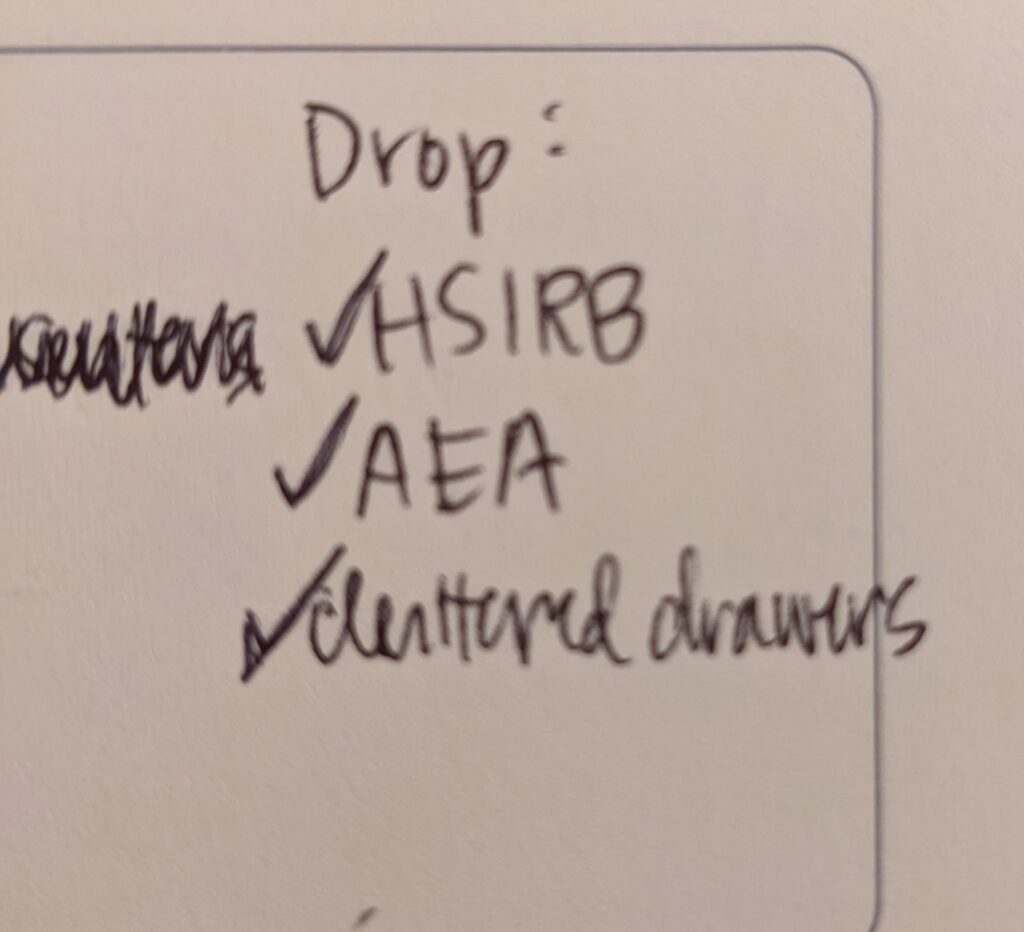
I quit my spot on the local Human Subjects Institutional Review Board (and currently have a ban on all committee work). It didn’t fit the way my career had evolved anymore.
I quit working for the American Evaluation Association, who chronically underpaid me.
And I quit having cluttered drawers because it messes with my peace of mind.
Another year, I wrote:
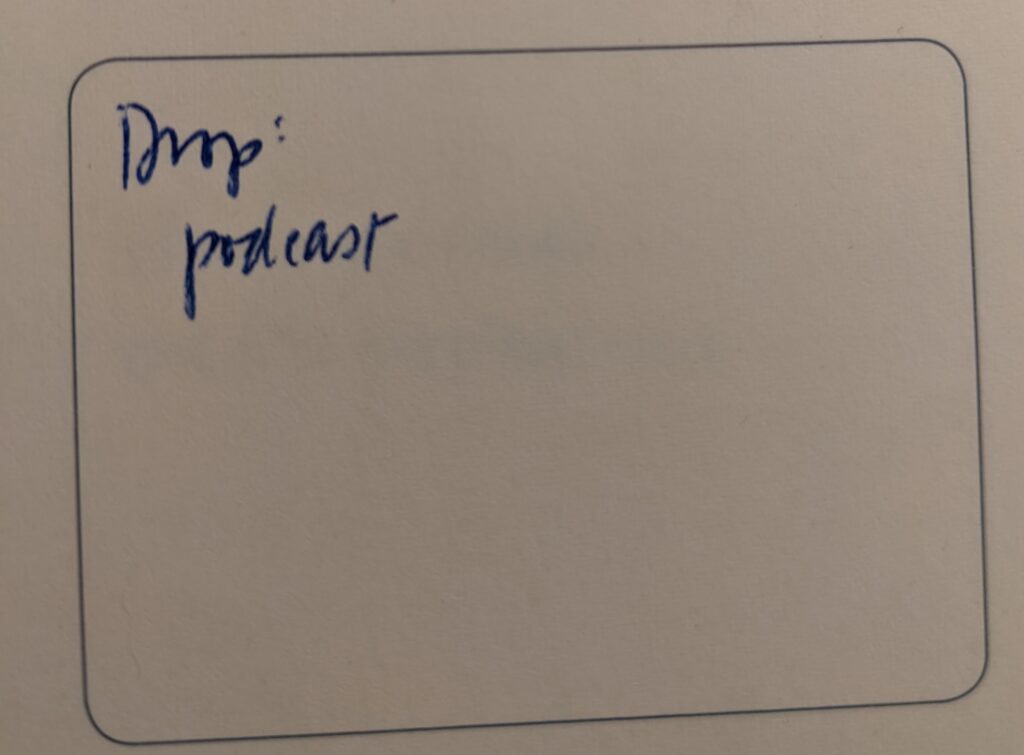
That was the only thing. I quit hosting a podcast. It took up a lot of time and the more I got to know my cohost the more my internal alarm bells were going off.
This quit list came in prep for the year I knew I’d be writing books two and three:
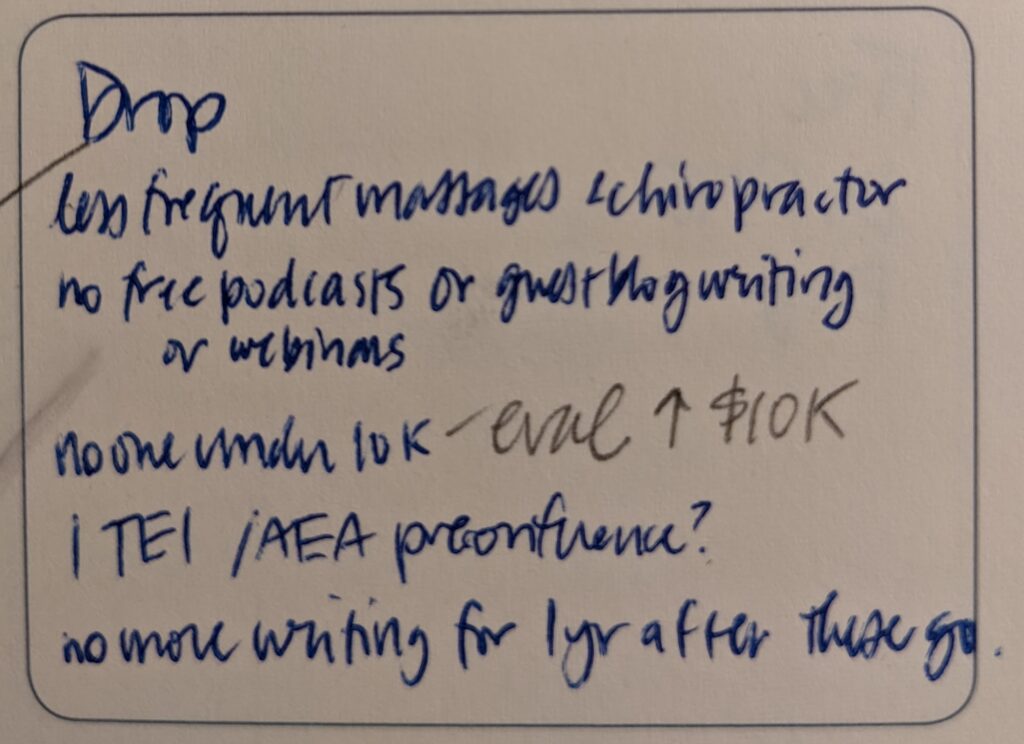
I actually said I’d quit having such frequent massages and chiropractic adjustments! What the hell was I thinking?! It takes me a while to learn from my mistakes.
I quit writing for free on other people’s blogs.
I quit working for small projects, which take just as much admin time as big projects.
I significantly cut back on holding workshops for organizations that paid me far under what I was worth.
And I predicted I’d be done with my post-book recovery after just one year. LOL.
More recently, I quit taking on work with people or companies that don’t align with me. And I quit reading emails from my kid’s school’s PTA – bye, guilt!
Each of your goals should also have a quit buddy.
It’s been five years since I wrote a book. Each year my editor gently asks, in her hard-to-say-no-to London accent, “Can we put our heads together about another edition?”
I’m still not sure I feel ready. It’s taken five years to recover from the burnout.
This time around, I’m not saying yes until I can identify the things I’ll quit.
I’m not willing to sacrifice sleep, personal time, or exercise.
I’m not gonna give up writing you emails or getting into the Boost & Bloom Office Hours to answer your burning questions.
So what is gonna give?
Without a doubt, I’ll lose out on income. Books are not lucrative and I’ll have to quit taking on so many data viz workshops.
And that’s as far as my thinking has evolved right now. Which is why I haven’t answered my editor yet.
The hardest: Quitting what you started.
It’s pretty easy to identify the things you’ll quit that bring you resentment, like that committee. Sooooo much harder to let go of the things you founded.
A Bearing Fruit reader reached out on a different topic but in the process of introducing herself, she listed out all the extra curricular groups she’d launched or was currently chairing. I could see the squeeze those were putting on what she really wanted to do with her time. So this part is for you.
Nobody wants to let go of their babies. Even if it means the baby has taken all your fruit and cut your branches (ever read The Giving Tree? It’s dark!). You’ll feel better about leaving it behind if you send it off with some guidance.
Write up some guiding principles for that group you started. Make a wish list. Develop an operating manual. Then pass it all on to someone else (yes – you give other people leadership opportunities, which is very cool). You get no guarantees that they’ll abide by your instructions. Hope they’ll make your baby even better.
If it dies on the vine – that’s what it was supposed to do. No org, club, interest group, or adventure can sustain on the labor of one person (you, Babe).
You can always come back in five years and run for vice president. And no matter what, “Founder” stays on your resume.
My friend, what’s on your quit list? Shoot me an email with the next thing you’ll quit, as soon as you need to make space.
Batch, Please
Working from home has so many upsides: a 30-second commute, a dress code that includes slippers, and free cat pets all day long.
Working from home also has a major downside: Interruptions.
UPS ringing the bell with another delivery. My partner telling me he’s going out. Even good interruptions like a delicious hug from my teen before he goes to school and that purring cat finding a home on my lap – still interruptions.
When our brains have to switch gears, even momentarily, it takes us a ton of time to get back on track – like 25 minutes to refocus and get back in the groove. For every distraction.
This article from the American Psychological Association says we lose 40% of our productivity when we task switch.
There’s a switch cost.
While I’m tempted to put a KEEP OUT sign on my office door, I have to admit that it’s me. Hi. I’m the problem. It’s me.
Like, just now, in real time as I’m writing this to you, I stopped writing after “It’s me” and sang a little Taylor Swift in my head, checked my email, picked up my phone, read a story about how China says it successfully cloned 3 highly productive super cows, and then stared at the keyboard for a while. Why? I even knew what I wanted to write next.
I think I’m not alone.
We’re all highly distractable.
Our brains are delicate little things. If they start to get overwhelmed, they check out. Our sweet lil brains are actually trying to protect us by being so weak. We can’t totally eliminate this issue. But on the other hand, I don’t really have 25 spare minutes to give up for every distraction in my day.
Our weak brains are why multitasking doesn’t really work. If I’m cleaning my desk while “watching” a webinar, I’m not going to pick up most of what the speaker is saying. Even if I believe I’m listening, as in, I could repeat back their last few words, those words don’t have a chance to land in my heart and resonate. Because I’m divided.
Single-tasking, or monotasking, is always more effective. It’s that seemingly contradictory notion that you have to slow down to make progress. One thing at a time, done well, is more productive and effective than two things you half-ass.
Even though Taylor Swift is still running around in the back of my brain somewhere.
The way to make single-tasking really work for you:
Batch.
Batching means you collect all the very closely related tasks and do them in the same span of time. A single-tasking streak.
Let’s take every entrepreneur’s favorite job: Chasing down clients who owe you money.
Step One: Psych yourself up to address this. That’ll take an hour and a latte run.
Step Two: Open your computer, get into your invoicing program, and locate the unpaid invoices and the date you sent them.
Step Three: Dig through your emails to find the last time you communicated with that client.
Step Four: Write an email that perfectly balances humor and professionalism while thinking to yourself “eff you, pay me.”
Step Five: Reread it five times. Remove some exclamation points.
Step Six: Hit send.
Ok so if you chase one invoice per day, girl that’s your whole morning.
But if you batch your invoice-chasing all in one sitting, you at least don’t have to repeat the costly steps one and two over and over. The time it takes to write the second email will be a fraction of the first because you already did all the hard work (and who am I kidding, I know you’re gonna copy/paste).
I block my batches in my calendar.
Today, for example, is blog writing day. I’m in the zone and I stay here, just writing love letters to you. I don’t have to re-get in the zone for each new post.
Big Boss Time is when I have to make hard policy decisions, write difficult emails, and fire clients.
Follow Up Hour is when I reply to all the folks who contacted me looking for workshops.
Video Day happens because I want to get into full hair and makeup as infrequently as possible.
My brain feels less stressed and more streamlined when I batch my work. Batching reduces the switch cost.
What could you be batching? Give your batch time a fun name and then email it to me.
The Secret to Social Media
Actually, this is the secret to pretty much anything.
Show up. Consistently.
That’s it.
Whew!
The secret isn’t to write 365 homerun tweets that go viral. No one can do that. It’s a bar set too high – so high it’ll intimidate you into never ever hitting Send.
Accept the fact that much of it will be meh.
Like any bell curve, most of your posts are going to be perfectly fine. Some will suck. Occasionally, you’ll knock it out of the park.
Some days I write posts that get hundreds of interactions.
Some days I clearly missed the mark.
Most of the time, my posts are somewhere in the middle. Good, not viral.
By the way, that popular post and that least popular post took about the same amount of time to write. I’ve seen zero relationship between the time you take to develop your social media content and how much it resonates with your audience.
So don’t overthink it. Don’t be a perfectionist about it. Just show up, consistently.
While you’re there, respond to some other folks. That way, you’re showing up in their comments, not solely expecting them to come to yours. Spend 10 minutes on this.
Then get off. Cause too much social media is bad for your mental health.
Same thing for newsletters.
Be there on a consistent basis.
In fact, Steph Smith wrote a reassuring article about how greatness is really just being good, repeatedly.
Consistency is the hard part because it’s soooooo easy to give up when your new podcast only gets 6 downloads. It’s much more difficult to trust the process for a little longer and keep editing future episodes.
Here’s what I mean:
Say you were to visit my data visualization blog and see that my last post was June 2022. And the one before that was from 2021. At your most gracious, you might think “Wow she’s got so much work she can’t even dedicate time to her blog.” But on a typical day, you’d likely conclude that I just gave up on my little side project.
It would be a signal that I couldn’t see something through (like, not only did I give up on the blog but I also didn’t bother to remove the withering thing from my site, like some skeletal succulent abandoned in a windowsill).
But if you come to my blog and see I’m consistently sharing good ideas every two weeks, you begin to see me as a reliable resource. Someone who can be trusted.
Trust builds connections. And connections get you contracts.
Showing up consistently keeps you top of mind. So when your boss says “hey I think it’s time we get some data visualization training” I’ll be the person you think of because I’ve shown up in your inbox with good ideas every two weeks for years.
Yep, it’s a long game.
But you can’t show up consistently everywhere, all the time. You can’t be running 100 different long games. That’s a burnout maker.
Which means you have to be choosy about where you want to put your energy. Pick one direction. Put it in your calendar. And go.
What have you chosen? Where are you showing up consistently and playing the long game? Send me a link so I can ride shotgun.
No Regrets
This is going to sound like a bummer way to start but hang with me, it’ll be brief: My grandma passed to the other side recently. You don’t need to email me with condolences. It’s all good.
I didn’t realize, when I hung out with her the night before, that I’d be the last one to speak to her. She was retrospecting on life. I asked if she had any regrets. She broke out into a big smile and then fell asleep for a few minutes.
The same day I was visiting my grandma, Big Think published this article on the Harvard Study of Adult Development. The Harvard study and several others that track humans for decades produced similar findings: Life happiness is found in the quality of our relationships.
You’ve probably heard this before. If you’re like me, you’re already thinking “yeah, yeah,” with your hand on your mouse, ready to go scroll Instagram. Hold on.
If you want to be satisfied with your life, you’ve gotta invest in your family and friends. This is terrible news for people like me who have a hard time making new friendships as an adult.
The Big Think is careful to clarify that loneliness, which is what kills you, is “people who are more isolated than they want to be.” So if you LOVE being by yourself, do you, Boo. That’s a little freeing, right?
As long as you’re being honest.
If you think you’d like to be a little less isolated, let me tell you what I’ve been noticing.
People place bids.
Bids are tiny little invites to connect.
Perhaps a decade ago, I got new neighbors. They were from Montana. They raised backyard chickens that we’d watch when they went home for the holidays. She worked remotely and when she found out I was also typing away in my house all day, she said “Hey if you ever want to take a work break, hit me up and let’s go for a walk or something.”
Looking back now, I can see that was a bid.
I never took her up on it. I wanted to, sure. But there was always some Pressing Work Thing I needed to attend to instead. That’s what serious CEOs do. They don’t just vacate the office when there are Important Emails to be Answered.
A few years ago, they moved back to Montana because they missed the community.
Now I’m not saying I could have changed the course of their lives or something, but I definitely could have closed the laptop and enjoyed the company for 45 minutes once a week. You walk with someone for 5 years and you form a bond. (Also, just sayin, I coulda used the exercise.)
Work will always be there. The opportunity to create those life-satisfaction-building-connections will not.
I missed the bid and I regret it.
Now I look out for them and I intentionally bid all over the place. Lunch on Friday? Yes please.
Happiness requires a mindset shift for entrepreneurs.
There’s a very American work ethic we’re subscribing to, whether or not we’re aware of it.
Work hard now for future rewards.
Nose to the grindstone gets you a massive nest egg and a glorious retirement. Right?
Except whatcha gonna do with all that money and free time? Hang out with… who, exactly? Those friends you never nurtured along the way?
Please be cautious of promises of future reward.
Shifting our mindset would look like:
Blocking out four weeks of vacation in the year, even if you don’t have a destination in mind, even if you just stay home and enjoy the quiet time. Pick whole weeks or block out every Friday. You’ll figure out what to do with the vacation days, trust it.
Scheduling friend dates during the “work day.” Go for that walk, hit up that Indian buffet. I promise, you’ll feel like you had a good day.
Eating on the good plates and drinking out of the good cups. I know you normally reserve those for special occasions but I’m confident you can find something to celebrate every day, if you look for it. Today I finally took my dress to the tailor. Celebrate your accomplishments!
Giving people their flowers, while you can. Don’t wait until your colleague tells you she’s quitting to say “Oh shoot, I really like working with you.” Tell her now. Glow up that professional peer on your socials. Take a deep breath and tell your grandma exactly how she made your life better.
Let’s have faith in the fact that this isn’t going to turn into some YOLO sprint to bankruptcy court. You’re committed to growing your business and building a legacy.
It’s just that the legacy we leave for the next generation shouldn’t just be a big bank account. It should also be an example of a life well lived.
My Multi-Year Mistake
I am absolutely kicking myself. I totally messed up and accidentally put myself in the middle of a poop sandwich that I’ll have to eat for years. Come ugh with me.
Rewind a couple years (yes please we were so innocent then). A long-time client I hadn’t heard from in a beat asked for a new contract. Cool, right?
They’re government, which means we cut down 10% of the Amazon rainforest to generate the paperwork necessary to get a contract in order. It takes months, notaries, and alllllll your patience.
So three months into working together, the contract person emails me like “Hey I think we have a beautiful future together. What’s say we extend that onerous contract by a five years? It’ll be an easy 1 page extension form and it’ll keep us from having to steal endangered macaw habitats next time around.”
Sounds like an easy yes to me! I signed away.
That was my mistake.
Because, my friend, the contract documented my rates.
And I had just committed to charging those rates for five years.
Rookie move.
Had I known it would be a five year contract when I was originally negotiating, I would have stipulated a % increase each year. But because I was contracting for one short term project, annual increases weren’t even on my radar.
Matter of fact, I didn’t even catch my mistake when the extension was finalized. Nope.
It was only recently, years later, when someone at the company reached out with a request for work and referenced a price agreement that was from pre-COVID olden days, that I realized how much I screwed myself.
I shrieked. I shuddered. I wailed like a toddler.
My rates are far from where they were five years ago – and yours should be too.
Look, I’m not a gold digger. It isn’t all about the money.
The concern is really about the resentment I felt as a consequence of my mistake. It was my own damn fault. But it still put a chip on my shoulder that would inevitably impact the quality of the work. And that’s not how I want to be in the world.
I bet you’re wondering how I handled it.
Well, my saving grace was this: Their timeline was immediate and my plate was full of other work. I was able to decline on those grounds.
But that won’t be the case for every minute until the agreement expires.
In the meantime, my work is to (1) get right with the fact that I made this bed and I’m gonna have to lie in it. And (2) build a check into my systems to prevent me from signing extensions without amending the price structure.
Have you been here too? Where you got yourself stuck in a tough spot and you’ve gotta just deal with it? Help me feel less alone and tell me about it.

